Purim-

Rabbi

Moshe Taragin

Zachor Rebbetzin Dr. Adina Shmidman Director, OU Women’s Initiative page


Purim-

Rabbi

Moshe Taragin

Zachor Rebbetzin Dr. Adina Shmidman Director, OU Women’s Initiative page

04Dear Torah Tidbits Family
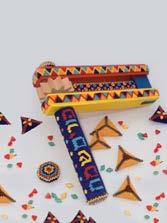
Rabbi Avi Berman
08From the Desk of Rabbi Moshe Hauer
10Aliya By Aliya Sedra Summary
Rabbi Reuven Tradburks
16Don’t Rain On My Parade!
Rabbi Dr. Tzvi Hersh Weinreb
20Inspiration and Perspiration
Rabbi Lord Jonathan Sacks zt"l
26Wisdom of the Heart
Rabbi Shalom Rosner
30A New Perspective on Purim
Rebbetzin Shira Smiles
32
Zachor: Thanks For the Reminder
Rabbi Judah Mischel
40OU Israel Schedule
54Zachor Rebbetzin Dr. Adina Shmidman
56The Enthusiasm is Growing
Rabbi Aaron Goldscheider
58Do All Who Ask Really Get Matanot La’evyonim?
Rabbi Daniel Mann
60Using Shemitah Wine For Mishloach Manot And The Purim Seudah Rabbi Moshe Bloom
62OU Israel's Parenting Column
Michal Silverstein
64OU Israel and the War in Ukraine
Chaim Pelzner
66Zachor Rakel Berenbaum
68Purim Laws and Customs: A Quick Review
70Towards Meaningful Tefilla
Rebbetzin Zemira Ozarowski
72The Y- Files Weekly Comic Netanel Epstein
48Simchat Shmuel
Rabbi Sam Shor
50Purim- Mountains and Trees
Rabbi Moshe Taragin
74OU-JLIC Eitan Phillips
76Torah 4 Teens By Teens
Yehuda Bessner // Laim Ratner
Kiddush Levana - Adar
Last Opportunity to Say Kiddush Levana until 14 Adar / Mon. Mar. 6, All night
Taanit Esther is on Monday, March 6th.
The fast begins in Jerusalem at 4:49am and ends at 6:07pm.
See pages 68-69
Designed and created by Ilana Joselowitz
I made alliya 39 years ago and live in Ra’anana.
I am a designer with a life-long career spent in the world of fashion and textile design. My journey with beadwork began when as a child growing up in Zimbabwe, I was fascinated and inspired by traditional African beadwork. Every bead and every stitch told a story. My wooden ra’ashan and ozney haman are beaded with minute glass seed beads intricately woven together in a burst of color. While the bold design and colors clearly echo memories of my childhood in Africa, I never tire of the joy and zchut of celebrating the chagim here and calling Israel home!
Ranges 11 days Wed - Shabbat
Mar. 1-11 / 8-18 Adar
Earliest Tallit and Tefillin 5:16- 5:04
Sunrise 6:07-5:55
Sof Zman Kriat Shema 8:59 - 8:52
Magen Avraham 8:23 - 8:16
Sof Zman Tefila 9:56 - 9:51
(According to the Gra and Baal HaTanya)
Chatzot (Halachic Noon) 11:51 - 11:49
Mincha Gedola (Earliest Mincha) 12:21 - 12:19
Plag Mincha
4:24 - 4:29
Sunset (Including Elevation) 5:41 - 5:48
Seymour J. Abrams • Orthodox Union Jerusalem World Center • Avrom Silver Jerusalem College for Adults • Wolinetz Family Shul • Makom BaLev • Birthright • Yachad • NCSY in Israel • JLIC in Israel • Pearl & Harold M. Jacobs ZULA Outreach Center • The Jack Gindi Oraita Program • OU Israel Kashrut
STUART HERSHKOWITZ, PRESIDENT OU ISRAEL
Zvi Sand / Yitzchak Fund: Former Presidents, OU Israel

| Rabbi Emanuel Quint z”l, Senior Vice President | Prof. Meni Koslowsky, Vice President
VAAD MEMBERS:
Dr. Michael Elman | Moshe Kempinski | Sandy Kestenbaum | Norman Schmutter | Esther Williams | Harvey Wolinetz
RABBI AVI BERMAN, EXECUTIVE DIRECTOR, OU ISRAEL
TImes According to MyZmanim (20 min. before sundown in most cities, 40 min. in Yerushalyim and Petach Tikva, 30 min. in Tzfat/Haifa)
OU Kashrut NCSY Jewish Action JLIC NJCD / Yachad / Our Way OU West Coast OU Press Synagogue/Community Services OU Advocacy OU Israel
MITCHEL R. AEDER, PRESIDENT OF THE ORTHODOX UNION Yehuda Neuberger, Chairman of the Board, Orthodox Union | Dr. Josh Penn, OU Kashrus Commission

RABBI MOSHE HAUER, EXECUTIVE VICE PRESIDENT | RABBI JOSHUA M. JOSEPH, ED.D. EXECUTIVE VICE PRESIDENT & CHIEF OPERATING OFFICER
Rabbi Dr. Tzvi Hersh Weinreb, Exec. V.P. Emeritus
OU KOSHER: Rabbi Menachem Genack, CEO/Rabbinic Administrator OU Kosher | Rabbi Moshe Elefant, COO/Executive Rabbinic Coordinator ISRAEL: Rabbi Yissachar Dov Krakowski, Rabbinic Administrator | Rabbi Ezra Friedman, The Gustave & Carol Jacobs Center for Kashrut Education/Rabbinic Field Representative
Headquarters: 40 Rector St. 4th floor, New York, NY 10006 212-563-4000 website: www.ou.org
Editor Emeritus: Phil Chernofsky
Editor: Rabbi Aaron Goldscheider | aarong@ouisrael.org
Advertising: Ita Rochel | 02-5609125 or ttads@ouisrael.org
Website: www.torahtidbits.com
Not getting enough TTs? Too many? None at all?
Contact our DISTRIBUTION 050-577-2111 • ttdist@ouisrael.org
David Katz, CFO, OU Israel | Chaim Pelzner, Director of Programs, OU Israel | Rabbi Sam Shor, Director of Programs, OU Israel Center Rabbi Sholom Gold, Dean, Avrom Silver Jerusalem College for Adults
22 Keren HaYesod <> POB 1441 <> Jerusalem
9101032
phone: (02) 560 9100 | fax: (02) 561-7432
email: office@ouisrael.org
website: www.ouisrael.org
Founders and initial benefactors of the OU Israel Center: George and Ilse Falk a"h
Torah Tidbits and many of the projects of OU Israel are assisted by grants from THE JERUSALEM MUNICIPALITY
OU Israel, Torah Tidbits does not endorse the political or halachic positions of its editor, columnists or advertisers, nor guarantee the quality of advertised services or products. Nor do we endorse the kashrut of hotels, restaurants, caterers or food products that are advertised in TT (except, of course, those under OU-Israel hashgacha). Any "promises" made in ads are the sole responsibility of the advertisers and not that of OU Israel, the OU Israel Center , Torah Tidbits.
Throughout our history, times of war and tragedy have unified Am Yisrael in stunning ways. Perhaps the greatest threat to our existence in Israel is sinat chinam (baseless hatred). It therefore pains me greatly to see the way in which we are treating one another within the current political climate, and I feel the messages of Parshat Zachor, Purim and ma’aser kesafim could not be more critical for us to internalize.
The Torah requires that we be attentive to the needs of others and support them whenever possible, embracing the obligations of tzedakah and chesed. The Gemara further teaches us about our obligation to set aside ma’aser kesafim, in which we give 10 percent of our income to those in need

who will use what they receive responsibly. However, on Purim we are required to take a different approach.
Purim has four main mitzvot of the day: mikrah megillah (the reading of the megillah), seudat Purim (the festive Purim meal), mishloach manot (sending packages of food or beverages to one another) and matanot l’Evyonim (giving gifts to the poor). Surprisingly, when fulfilling the mitzvah of matanot l’Evyonim, the Shulchan Aruch says we cannot use our ma’aser kesafim to fulfill the obligation.
Exploring this ruling Rav Soloveitchik offers a beautiful perspective that I’d like to share with you. The mitzvah of ma’aser kesafim is unique in that in the fulfillment of this mitzvah, HaKadosh Baruch Hu makes us His partner. Every month HaShem gives us extra money so that we can give it those we feel would most benefit. However, Rav Solovietchik explains that this obligation changes significantly when it comes to fulfilling the mitzvah of matanot l’Evyonim.
In the third perek of Megilat Esther, in the eighth pasuk, Haman goes to Achashverosh with his plan to kill the Jews. He justified his motives with the following:
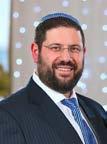
The OU Israel family sends heartfelt condolences to the Yaniv family of Har Bracha on the horrific murder of their sons/brothers
םחנמ ללה
בקעי לגי on Sunday in Huwara
“There is a certain people, scattered and dispersed among the other peoples in all the provinces of your realm, whose laws are different from those of any other people and who do not obey the king’s laws; and it is not in Your Majesty’s interest to tolerate them… Thereupon the king removed his signet ring from his hand and gave it to Haman son of Hammedatha the Agagite, the foe of the Jews.”

To prove that Haman was wrong and that we are a unified nation some 2,300 years later, we place a dedicated emphasis on the mitzvah of matanot l’Evyonim on Purim. Therefore, unlike ma’asei kesafim, when we are supposed to do our due diligence to identify those in need of monetary support who will use what they receive responsibly, our fulfillment of matanot l’Evyonim is to do the exact opposite. According to Rav Soloveitchik, on Purim we must show that we remain a unified nation and support any Jew who extends a hand in need.
This Shabbat Parshat Zachor we are obligated to remember what Amalek did to Am


Hilsenrath z"l



ל"ז השמ ר"ב םייח בקעי ברה on his 9th yahrzeit רדא חי Deeply missed by his children
Chaya and Azriel Heuman
Baruch and Sima Hilsenrath
Rochelle and Phil Goldschmiedt
Aviva and Michael Rappaport
grandchildren/great grandchildren
Yisrael during our departure from Mitzrayim. As it says in Devarim 25:
our political views. As we will soon say in the Haggadah, in every generation Am Yisrael will face a new enemy determined to destroy us:
“Remember what Amalek did to you on your journey, after you left Egypt - how, undeterred by fear of God, he surprised you on the march, when you were famished and weary, and cut down all the stragglers in your rear. Therefore, when your G-d grants you safety from all your enemies around you, in the land that your G-d is giving you as a hereditary portion, you shall blot out the memory of Amalek from under heaven. Do not forget!”
Since the time of Amalek our enemies do not differentiate their victims based on the color of our kippot, our religious beliefs or

“In every generation, a person is obligated to see oneself as if he/she/they left Egypt…”
Throughout our history, our unity remains the most effective shield in times of adversity. We are therefore obligated to remember our history and destiny as Am Yisrael, look beyond our differences and love one another. As we head into Purim we have an opportunity to channel the lesson of ma’aser kesafim and focus on uniting with others despite our political, socioeconomic or religious differences. Perhaps this is the time for us to extend ourselves and give mishloach manot to those who stand on the other side of our political and religious viewpoints and remind ourselves of our obligation.
May we be successful in our efforts and merit to bring the Geulah b’karov!
Wishing you all an uplifting and inspiring Shabbat,
We extend our heartfelt condolences to Gershon Markowitz and family.
Rabbi Avi Berman Executive Director, OU Israel aberman@ouisrael.orgThe Sovereignty Movement (Women for Israel’s TomorrowWomen in Green)
We mourn the untimely passing of our dear friend and partner
Debbie Markowitz z”l a quiet force and devoted worker for the Women in Green for many years, through her staunch and unwavering love for Eretz Yisrael.
May Debbie's memory be for a blessing and may we be comforted in the building of Eretz Yisrael.
Yehudit Katsover and Nadia Matar
The OU Israel family sends heartfelt condolences to the family and friends of Elan Ganeles ד"יה
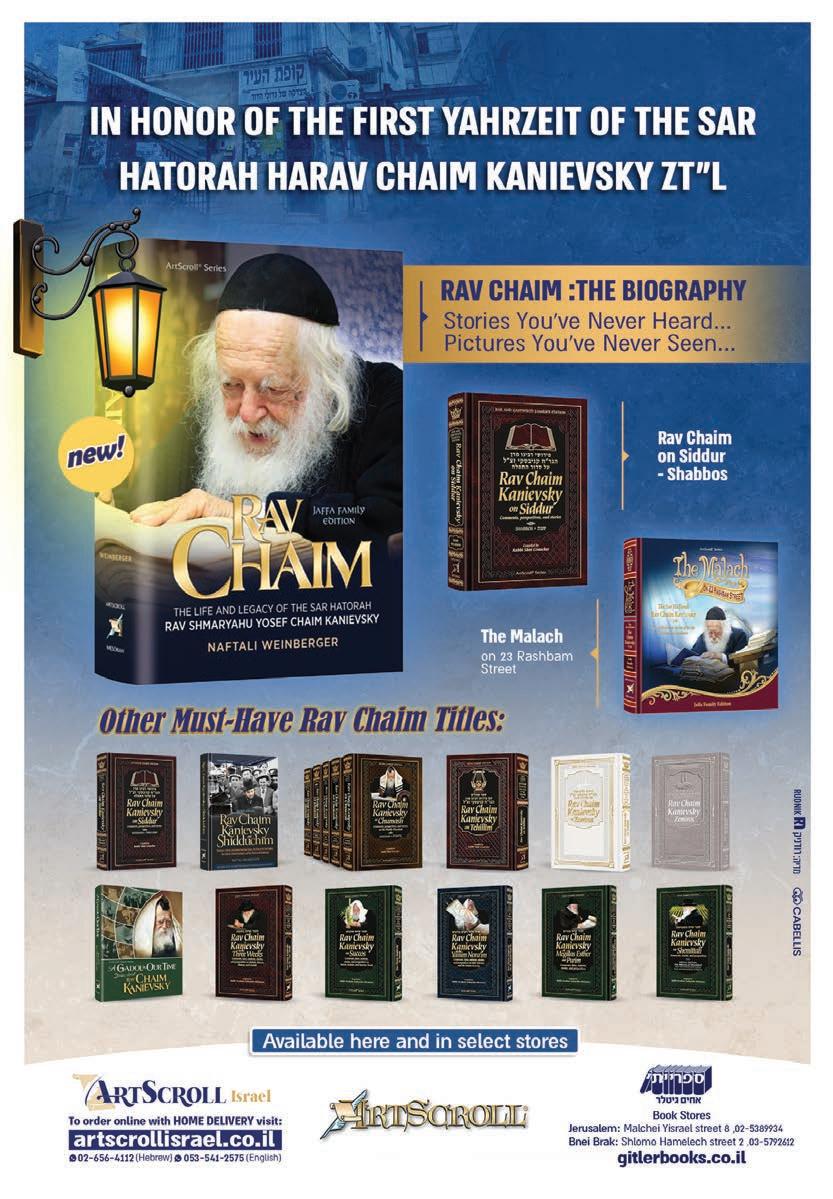


In the coming days, we will celebrate Purim, a holiday built on the theme of v’nahapoch hu, how everything can instantly be turned upside down. In the original Purim story, the day dedicated to the destruction of the Jews became the day of their triumph, while the gallows prepared for the Jewish leader Mordechai were used instead to hang their arch enemy, Haman. Upside down, indeed.
While the focus of the day is a recognition of how G-d runs the world, there is also a dimension of the Purim story that underscores the critical value of our own assumption of communal responsibility.
The turning point of the biblical Purim story was when Queen Esther, safely ensconced in the king’s palace, is activated by Mordechai to step forward and risk her life to save her people:
“Do not imagine that you alone from amongst all the Jews will be able to find safety by taking refuge in the king’s palace. For if you will be silent at this time, salvation will surely arise for the Jews from other quarters, while you and your family will be lost.”
Mordechai’s charge — which Esther
OU Executive Vice Presidentultimately acted upon — was to recognize that when our focus is limited to assuring our own life, liberty, and pursuit of happiness, that life is empty. We will find meaning, purpose, and eternity in our lives only to the extent that we benefit others.
Our sages similarly noted the contrast between Noach, who built an ark that saved him and his family while the world around them was destroyed, and Moshe, who refused to save himself alone and said to G-d that he would only accept to be spared if G-d would spare the entirety of the Jewish people along with him.
This perspective is not a given in the world around us but remains a staple of our religious worldview which teaches us that there are no rights without responsibilities. Indeed, in the early 19th century, Rav Chaim of Volozhin rephrased Mordechai’s charge to Esther into a sort of mantra which he shared with his children and students: “For this is what man is all about; he was not created for his own self but rather to help others in any way he can.”
Amira Hallel on
Savta and Sabba Vogel
It is for this reason that the Purim holiday is celebrated by far more than a feast for family and friends. Purim is a day with a special emphasis on gifts to the needy, as well as on sending care packages of food to those who will not be joining us for the actual feast. This inclusive celebration fits Mordechai’s charge, as celebrating by ourselves — much like saving only ourselves
— is empty of true meaning.

Purim provides us the opportunity to focus on our obligation to bring warmth, light, and joy to those who are most vulnerable and isolated. It is an ideal time for us to reach out, check in on, and reconnect to those who are alone. Doing so will also help us recognize that beyond the obligation to share our blessings with others, we will experience no greater joy than when we gladden the hearts of others.
but you could possibly do them. For when it comes to communications from G-d, you are unique, irreplaceable, sui generis, one of a kind.
Yes, our world, at times, feels upside down, and we pray for the miracle of Purim to visit us once again and turn things back around. But we can expect and anticipate that what will herald that turnaround will be our own national “Esther moment”, when our care and concern turn outward, beyond ourselves, leading us to act with our most vulnerable in mind.
This exchange presents a fundamental principle of the Torah: that G-d speaks to Moshe in a way that He does not, nor will He in the future ever do again with anyone else. When Moshe says that people come to him seeking G-d, what he means is: I have access to G-d. He speaks to me. (Speaking to G-d isn’t the trick; the trick is when He answers back.) Similarly, when Moshe says that he teaches G-d’s law, what he means is that G-d communicates those laws to him and to no one else.
This could very well be the prime purpose of this Yitro story. For, in the very next story, the giving of the Torah, the very same theme of Moshe’s uniqueness as the one to whom G-d speaks is central.
3rd aliya (18:24-27) Moshe heard. He chose judges, with only the most difficult cases brought to him. Moshe sent Yitro home.

It takes an honest leader to accept suggestions to improve. Moshe displays his honesty and humility – if the suggestion is good, embrace it. Just as Yitro accepted the news of the Exodus and affirmed One G-d,

kerenmalki.org

02-567-0602

Keren Malki empowers families of children with special needs in Israel to choose home care. Donations are tax-approved in Israel, US and UK.

Honoring the memory of Malka Chana Roth ד”יה 1985-2001, killed in the Sbarro bombing.

ALIYA-BY-ALIYA SEDRA SUMMARY

The commandments concerning the special garments of the Kohen Gadol as well as the garments for the regular Kohanim are given. The Kohanim and the altar are inaugurated in a 7-day inauguration. The commands of the daily offering and the altar for incense are given.
In the verses describing the Kohen’s garments I will indicate in bold which are for the Kohen Gadol and which are for the rest of the Kohanim.
1st aliya (Exodus 27:20-28:12)
The Menorah shall be lit every evening. Take Aharon and his sons to serve Me. Make them holy garments for honor and glory. Kohen Gadol, Garment 1: Make the Efod. It is woven of techelet, purple and red. It is a skirt with shoulder straps. An ornate jewel with the
names of 6 tribes is fastened to each of the shoulder straps. Aharon carries the names of the Jewish people as a remembrance before G-d.
There are 2 different sets of garments for the Kohanim. The regular Kohanim wear 4 white linen garments. The Kohen Gadol wears these 4 white linen garments as well as an additional 4 fancy coloured and gold garments over the white ones.
The Torah begins with the fancy more elaborate garments of the Kohen Gadol. But this is not the order he would put them on in the morning. It would be akin to putting on your overcoat, then your shirt, then undershirt. That’s not going to work.
But this is parallel to the description of the Mishkan. We began with the Aron because that is the heart of the building, though when constructed, the building would be built first. Here too, the Kohen Gadol’s garments are more dramatic, so even though they go on last, they are described first.
These are regal colors; the same colors as the beautiful curtains of the Mishkan. Is the Kohen dressed royally because of Who he is approaching? As we would dress in our finest for an audience with the King. Or is G-d commanding us what He thinks of us; as if to say “You are kings in My eyes, so dress accordingly.” The Kohen Gadol represents the Jewish people, a people regal in His eyes.
straps of the Efod and to the skirt. Aharon will bear the names of the Jewish people on his heart when he enters the Holy place. As a constant remembrance before G-d. And place in this breastplate the Urim and Tumim.
The names of the 12 tribes are inscribed twice. 1. 6 names on one jewel, 6 on another, mounted on the shoulder straps of the Efod.
and our next step will be to plant a fruit tree. I never thought of myself as being the agricultural type, but the feeling of settling and planting a portion of Eretz Yisrael, has been truly euphoric. Iy”H, when we plant our tree, and eat the fruits that will grow one day, I think we will be able to truly appreciate that unique Kedusha found in the fruit of Eretz Yisrael!



2. Individually, on each stone of the breastplate. On the shoulder; on the heart. The Kohen Gadol, as representing the entire Jewish people, expresses our approach to G-d. We shoulder our responsibility, with love from the heart.
To conclude, when you buy your Tu B'shvat fruit this year, don’t search for those dried apricots and banana chips imported from Turkey. Rather, head over to the fresh produce and buy yourself some nice juicy Kedusha-filled Jaffa oranges and thank Hashem for bringing you to this land in order to be able to הבוטמ עבשלו הירפמ לוכאל, imbibing that Kedusha in every bite that you take!!
3rd aliya (28:31-43) Kohen Gadol, Garment 3: Make the Me’il, a completely techelet colored robe with an opening for the head. At the bottom hem, place alternatively pomegranates of colored woven wool and golden bells. Aharon’s entrance and exit before G-d will hence be heard. Kohen Gadol, Garment 4: Make the Tzitz, a golden headplate with Holy to G-d engraved on it. Fasten it to the turban so it rests on the forehead. Through this, Aharon will bear the sins committed through holy service and through it the Jewish people gain favor before G-d. All Kohanim, 4 garments: The Kohen Gadol and all Kohanim during service wear 4 garments. 3 of these are white linen: 1. pants, 2. robe (ketonet) and 3. turban for the head. The 4th is a belt of colored woven wool. The Kohanim wear these garments during service; the Kohen Gadol wears only these 4 when he enters the Holy of Holies. He wears these 4 and the 4 fancy gold and coloured garments, a total of 8, during the rest of the year.
The regular Kohanim wear white linen garments. This is in stark contrast to the Kohen Gadol. He is all decked out; they are noticeably simply attired. We need to approach G-d in majesty tempered with humility. Man need be majestic while humble. Regal, yet simple. As the famous mussar saying: in one pocket, “the world was created for me”, in the other “I am dust and ash”.
4th aliya (29:1-18) The inauguration of the Kohanim: To sanctify the Kohanim take offerings of all the sorts that will be offered in the Mikdash. Dress Aharon in his special garments. Anoint him with oil. Dress the Kohanim in their special garments. Bring the various different offerings on the altar – for a pleasing aroma before G-d.
Moshe’s name does not appear in this May
ל"ז םייח קחצי עשוהי יתבש ןב בייל הירא our beloved father, grandfather and great grandfather on his 25th yahrtzeit
parsha even though he is doing much of the action. He was told to command the lighting of the menorah at the beginning of the parsha and also to fashion the Kohen’s garments. And here, he dresses Aharon in his garments, thereby anointing him in his new role. So, while his name is absent, Moshe is actually quite active.
Moshe is the epitome of humility. In the parsha in which his brother assumes a unique and special role in the Jewish people, Moshe is completely absent. Well, no, he actually is quite active; it is his name that is absent. He takes a back seat, investing his brother with greatness, not stealing his thunder with even the mention of his own name.
5th aliya (29:19-37) Aharon and the Kohanim are inaugurated through the offering of a ram, with blood of the offering placed upon them and upon their garments. The offerings of the inauguration are brought. A future Kohen Gadol, who will replace Aharon, will wear these special garments for 7 days as their inauguration. They too will repeat this ram offering. Aharon and his sons repeat this ceremony every day for 7 days. The altar too is inaugurated for 7 days.
The Goldman, Deutsch, Simpson and Meller families
Aharon and the Kohanim are inaugurated in a 7-day ceremony of offerings. That is a long inauguration. It may be such to impress upon the Kohanim that while they have a unique position, including gifts and benefits due to their holy work, they are servants of G-d, not lords over people. Privilege takes a quick path to the head bringing haughtiness and a sense of entitlement. The Kohanim, as all public servants, need to be vigilant to remember that they serve G-d and the people, not the other way around. Hence, they
the learning in this issue be dedicated
been memorialized in a popular song, "An eternal people does not fear the long and arduous path."
be in loving memory and נ"על our dear parents whose yahrtzeits are in Kislev
Doris Weinberger a"h
ולסכ 'ד -ה"ע המלש לאקזחי תב האל הרובד
need a heavy, long inauguration of serving G-d to realize their position as servants of Him and not lords over people.
Max Weinberger z”l
ולסכ ז"כ -ל"ז בד ןב ךלמילא
Greatly missed by their children, grandchildren and great grandchildren
Rav Aryeh and Dvora Weinberger
Bernie and Leah Weinberger
Patience is necessary for those who follow Isaac's way. But a wise woman taught us that patience is but another name for hope. That woman was Jane Austen, who put these words into the mouth of one of the characters in her great novel, Sense and Sensibility: "Know your own happiness. You want nothing but patience—or give it a more fascinating name: call it hope."

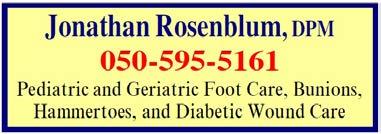
Menachem and Hannah Katten
In observance of the Shloshim of our friend
Yehuda Leib Berren z"l
6th aliya (29:38-46) 2 offerings are to be brought as a daily offering, one in the morning and one in the afternoon. A sheep, with flour and oil, and with wine. It is brought in the Ohel Moed, the place where I meet with the Jewish people. I have sanctified this place, as well as the Kohanim. I will dwell amongst the Jewish people and be their G-d. And they will know that I am G-d who took them out of Egypt to dwell amongst them.
Rav Menachem Weinberg will give a shiur in his memory "Heroic Joy"
Monday evening, 23 November/ 8 Kislev

7:30pm
Zoom Meeting: 853 8980 1519

Password: Yehuda
The permanent daily offering is brought twice daily specifically in the Ohel Moed, the place where G-d declares that He will dwell amongst the people. The stretch of the Hand of G-d to man is reciprocated by man’s bringing offerings to Him. But it is not just that we reach for Him through our offerings; He says to bring these offerings specifically where He dwells amongst us. It is a mutual reach; He for us, us to Him.
7th aliya (30:1-10) Make an incense altar of wood overlaid with gold, 1 square cubit. Place it in front of the curtain behind which is the Aron, the place upon which I will meet with you. Offer incense twice a day, at the time of the Menorah cleaning in the morning and Menorah lighting in the evening. It is solely for the prescribed incense, not for offer ings of flour or wine.
The incense altar is totally out of place. We had all the instructions of the vessels of the Mishkan last
02-674-3888
In the heart of calm and pastoral BAKA –Private arab house, 6 rooms, 500m + possibility of building 250m, huge garden, approx. 700m, completely renovated, underfloor heating + a/c, large parking, 5 bathrooms, 5 toilets, green
MENDEL 0528980111
BAKA - New penthouse, 4 rooms in a small luxurious building with character, alone upstairs, 3rd floor + elevator, 4 orientations, 3 toilets, 2 bathrooms, terrace / sukkah, 70m, parking, store-room
5500000 NIS MENDEL 052-8980111
VERY GOOD INVESTMENT!! In Bustan Baka
In a beautiful boutique building – Large 2 room apartment, ground floor (0 steps), elevator, balcony, parking
2450000 NIS MENDEL 052-8980111
KATAMON HAYESHENA / Near EMEK REFAIM3 rooms, 75m + independent unit, 30m, private entrance, garden in use, calm, parking
MENDEL 052-3202488
In the heart of BAKA in a calm and pastoral street - spacious 5 rooms, elevator, terrace, store-room, parking, near all amenities
5300000 NIS MICHAEL 052-3202488
ARNONA – 3 rooms that will be transformed into 4 rooms of 90m, 3rd floor with elevator, store-room, parking
ONLY 2550000 NIS
MICHAEL 052-3202488
BAKA - quiet and pleasant little street5 rooms, 175m, on one level, alone upstairs, private entrance, elevator in the apartment, high ceilings
MIKAEL 052-3202488
TALPIOT HAYESHENA / little street – In a new quality project, 5 rooms, 140m, elevator, large garden, occupancy in 2 years
6000000 NIS MICHAEL 052- 3202488
week: Aron, Menorah, Table, altar for offerings. What is unique about incense that its altar comes after all the other instructions?
In this I speculate. Incense produces smoke. At Mt. Sinai, when G-d descends to speak to man, His Presence is represented by a thick cloud of smoke. Throughout the rest of the Torah, when His Presence is indicated, it is with a cloud. Perhaps that is the role of the incense; to produce a cloud of smoke. To indicate His Presence. And it comes at the end of this whole process because that is the culmination. The Mishkan is to be a place for His Presence. The culmination of the Mishkan is His Presence. And so the final command is to burn incense, to produce a cloud, indicative of His Presence.
The Maftir Aliyah is Parshat Zachor from Ki Tetzei (25:17)

1 SHMUEL 15:2-34
This week’s special haftorah highlights the theme of the Almighty’s command to destroy the people of Amalek. This echoes the subject matter found in the Torah reading of Amalek’s unprovoked attack on the Israelites as the Isralites traveled in the wilderness and our eternal responsibility to avenge this horrendous crime.
Shmuel addresses King Shaul and commands him to wage battle against the Amalikites, and leave to survivors - neither humans nor beasts. The army of Bnei Yisrael kills the entire population with the exception of the king, Agag, and they also spare the best of the cattle and sheep.
Hashem then conveys the following
message to Shmuel: “I regret that I have made Shaul king.” Hashem says, “For he has turned his back from following Me, and has not fulfilled My words.”
Shaul admits that he had transgressed and then invites the prophet to join him in his return home. Shmuel refuses his offer. “The Lord has torn the kingdom of Israel from you, today; and has given it to your fellow who is better than you.” Shmuel then kills the Amalekite king.
20th of 54 sedras; 8th of 11 in Sh’mot
Written on 179.2 lines in a Torah (33rd)
10 Parshiot; 2 open, 8 closed 101 p’sukim (35th8th in Sh’mot)
1412 words (35th - 8th in Sh’mot)


5430 letters (32nd - 7th in Sh’mot)
7 mitzvot; 4 positives, 3 prohibitions
There are other mitzvot in the sedra besides those seven. Numbers don’t always give an accurate “Mitzvah-Picture” of a sedra.
ל"ז
לארשי ןב ןנחוי לצרה ילתפנ of his passing
Continue brushing your teeth and smiling. רתסא תב הביבא ותשא ידי לע שדקומ May we know no more tzaar. May his memory be blessed.
We send our heartfelt condolences to his children
Eiferman
JERUSALEM SALES
PROJECTS, BUILDINGS AND VILLAS
Presales and immediate occupancy.
FOR SALE - NEW LISTINGS
SHAAREI CHESSED / RECHAVIA
1) Renovated 110 sqm 3 bdrms, 1st floor, succah.
2) Beautiful 3 bdrm apt + 50 sqm succah balcony, shabbat elevator, parking and view.
3) New 228 sqm duplex penthouse, 30 sqm succah balcony, shabbat elevator, parking and a view.
GERMAN COLONY
2 bdrms, 2 bathrooms, succah+ roof terrace.
OLD KATAMON
125 sqm, priv. entrance 3 exp. NIS 4,300,000
TALPIOT
4 rms, balcony, elevator, machsan, parking, view.
NACHLAOT
Renovated 2 rms, private entrance, storage room, NIS 2,350,000
FOR RENT
– Spacious 2 bdrms, 2nd floor, furnished, succah balcony, private parking, immediate. NIS
FOR MANY MORE PROPERTIES: 02-651-4030
GET HELP NOW! STOP!
If you have raised a child, you have had this experience. Your little boy or girl came home from school with a sample of his or her artwork. To you it just looked like a hodgepodge of scribbles, random color smears. But your child exclaimed, “Look, Mommy, it is a picture of the trees and fields that we pass on the way to grandma’s house.” Or, “Wow, Daddy! I drew the sun and the moon and the stars in the sky!”
What do you do with the picture? What most of us would do, and certainly what my wife and I did many times with our kids, is to tell them how beautiful the picture is, how it looks just like what they describe it to be, and then post it on the refrigerator door or some other prominent place, then show it off for all to see.
Imagine how devastating it is, on the other hand, if the child gleefully brings his work of art to the parents attention only to have the parents say, “Ugh! What an ugly picture! It’s just a bunch of smudges on paper!
BY RABBI DR. TZVI HERSH WEINREB OU Executive Vice President, Emeritus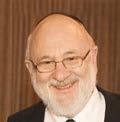 Eliya
Eliya
It doesn’t look at all like a forest or field! Sun and moon and stars, no way!”
Such a parent has extinguished the poor child’s exuberance. By cruelly scoffing at the youngster’s attempt to produce a work of art, the parent has seriously harmed the child’s self-esteem. The parents had an opportunity to deliver words of encouragement which would have had a long-term impact. Instead, they instilled in the child a lack of self-confidence which may very well have left a lifelong scar.
The Jewish tradition condemns the scoffer and sees in cynicism a powerful destructive force.
What, you may ask, does this have to do with this week’s Torah readings? Let me explain. Although the primary Torah portion this week is Parshat Tetzaveh (Exodus 27:2-30:10), we also will be reading an additional selection, and a very important one at that.
This week is one of the four special Sabbaths which precede the approach of Passover. Two weeks ago was Parshat Shekalim, which was discussed in this column. This week is Parshat Zachor, where we read the story of Amalek’s treacherous attack upon the people of Israel as they marched through the wilderness (Deuteronomy 25:17-19).
Amalek’s cowardly attack is to be remembered for all generations. There are many views as to what was so dastardly about his
actions. Indeed, he is often portrayed in our tradition as the precursor to the genocidal murderers, the Hamans and Hitlers, of our tragic history.
But let me share with you a different view of the nature of Amalek’s crime. Our Sages in the Midrash Tanchuma note that we encountered two “visitors” soon after we left Egypt, as we began our trek through the desert. One was Yitro, who ultimately joined us, and the other was Amalek who attacked us from the rear.
The Midrash Tanchuma draws upon the verse in Proverbs 19:25, which reads, “Beat the scoffer, but the simpleton will become clever.” The simpleton, says the Midrash, is Yitro, who overcame his prior beliefs and became clever. The scoffer, on the other hand, Amelek, was blinded to the miracles of the Exodus by his cynicism, and his evil was unredeemable.
Amalek is the ultimate scoffer, the paradigm of cynicism. He is described as “asher karcha,” usually translated as “the one who ‘surprised you,’ or ‘happened upon you [on the road as you left Egypt].’” (Deuteronomy 25:18)
But Rashi offers other explanations, one of which is quite fascinating. Rashi suggests that “asher karcha” can mean “he who cooled you off,” and he offers the metaphor of a seething cauldron or tub of boiling water, which Amalek cooled off by jumping into it.
The seething cauldron can be a metaphor for either the fear with which the other witnessing nations were overcome, which was dissipated by Amalek’s precedent. Alternatively, it can be a metaphor for the bubbling enthusiasm of the triumphant Jewish
MEKOR CHAIM - Close to the mesila park, large 4 rooms, 98m, Shabbat elevator, 2 balconies, good shape, master bedroom, quiet 3,590,000 NIS
CLOSE TO BAKA WITH GARDEN - Charming garden apartment, 4.5 rooms, 113m, private garden, 70m, no stairs, spacious, quiet, parking, exclusive 4,800,000 NIS
RECHAVIA WITH GARDEN - 5 rooms, 120m, garden, 140m, full of character, 20m building rights, 3 directions, quiet, for renovation, rare, exclusive
UNIQUE HOUSE IN OLD KATAMONGreat location, beautiful house on a plot of a dunam, huge garden, Arabic style, quiet, 2 parking spots, rare!
28, Kovshei Katamon Street, Jerusalem
Tel: 02.5633008 - www.ben-zimra.com

people, which was diminished, perhaps permanently, by the effects of Amalek’s attack.

Rabbi Isaac Hutner, in his posthumously published essays on Purim, takes the latter approach. “The Jewish people,” he writes, “were full of a spiritual energy and optimism that was dimmed by the scoffer Amalek.” The scoffing cynic has the ability to burst the bubble of enthusiasm with a shrug and a “so what?” or “big deal!” Amalek rained on our parade.
Sensitive students of the psychology of religion know the effects of cynicism and sarcasm upon spirituality and soulful moods. One such student was the famed 18th century pietist, Rabbi Moses Chaim Luzzato, more commonly known as the Ramchal. This is what he writes in his masterpiece, Mesilat Yesharim (The Path of the Just), towards the end of the fifth chapter:
“Scoffing has a sinister and depraving effect. As a shield that is anointed with oil causes the arrows that strike it to glance off without touching the body, so scoffing renders reproof and chastisement ineffective. A single sarcasm or jest is liable to blight most of the spiritual zeal and enthusiasm which a man may have acquired from the experience that taught him to be particular and scrupulous in his actions. As a
result of ridicule he is apt to cast off all that he has learned so that there is no sign of it left in him, not because it is not instructive, nor because he lacks understanding, but because mockery has the power to destroy every vestige of conscience and reverence.”
When we observe Parshat Zachor and read the story of Amalek in the synagogue this Shabbat, we are commanded to forever remember what he did to our people. Of course, we will try to remember the primary lesson, namely to never forget the genocidal intentions of our enemies beginning with Amalek and continuing to this very day.
But it would also be instructive to remember Amalek as the cynical scoffer who would diminish our fervor and spirit. In remembering him in this manner, we would also do well to resolve that we ourselves are never guilty of mocking the accomplishments of others. We must be careful not to rain on the parade of other human beings, but rather to appreciate their accomplishments with neither envy nor disparagement.
We must find room on the doors of our refrigerators to proudly exhibit the childlike paintings of those who show them to us with enthusiasm.
Great Investment! 2 rooms, mirpeset, underground parking, in new building under construction, great location. Starting at 1.89m shekel. 3 & 4 rooms also available. Baka very close to Emek Refaim, 4 rooms, 82m in a tama 38 building. Elevator, mirpest & storage. Will be ready in 3 months. Amazing price of 2.99m shekel.

For rent in the German Colony on Emek Refaim street, 2 rooms, one floor up, good shape, parking. 5,100 a month.
בוט םשו די יתמוחבו יתיבב םהל יתתנו" "תרכי אל רשא ול ןתא םלוע םש תונבמו םינבמ A GREAT OPPORTUNITYThe Charity Center and Beit Tamhui in Beitar Illit need a donor for the building of a relatively small amount, in exchange for a name to be commemorated on the building
For more Details: call:052-716-2333
Whatsapp:055-9935556
Email:6515492@gmail.com


Beethoven rose each morning at dawn and made himself coffee. He was fastidious about this: each cup had to be made with exactly sixty beans, which he counted out each time. He would then sit at his desk and compose until 2:00 p.m. or 3:00 p.m. in the afternoon. Subsequently he would go for a long walk, taking with him a pencil and some sheets of music paper to record any ideas that came to him on the way. Each night after supper he would have a beer, smoke a pipe, and go to bed early, 10:00 p.m. at the latest.
Anthony Trollope who as his day job worked for the Post Office, paid a groom to wake him every day at 5:00 a.m. By 5:30 a.m. he would be at his desk, and he then proceeded to write for exactly three hours, working against the clock to produce 250 words each quarter-hour. Through this
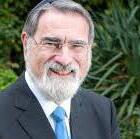
method, he wrote forty-seven novels, many of them three volumes in length, as well as sixteen other books. If he finished a novel before the day’s three hours were over, he would immediately take a fresh piece of paper and begin the next.
Immanuel Kant, the most brilliant philosopher of modern times, was famous for his routine. As Heinrich Heine put it, “Getting up, drinking coffee, writing, giving lectures, eating, taking a walk, everything had its set time, and the neighbours knew precisely that the time was 3:30 p.m. when Kant stepped outside his door with his grey coat and the Spanish stick in his hand.”
These details, together with more than 150 other examples drawn from the great philosophers, artists, composers, and writers come from a book by Mason Currey entitled Daily Rituals: How Great Minds Make Time, Find Inspiration, and Get to Work.1 The book’s point is simple. Most creative people have daily rituals. These form the soil in which the seeds of their invention grow.
In some cases they deliberately took on jobs they did not need to do, simply to establish structure and routine in their lives. A typical example was the poet Wallace
Stevens, who took a position as an insurance lawyer at the Hartford Accident and Indemnity Company where he worked until his death. He said that having a job was one of the best things that could happen to him because “it introduces discipline and regularity into one’s life.”
Note the paradox. These were all innovators, pioneers, ground-breakers, trail-blazers, who formulated new ideas, originated new forms of expression, did things no one had done before in quite that way. They broke the mold. They changed the landscape. They ventured into the unknown.
Yet their daily lives were the opposite: ritualized and routine. One could even call them boring. Why so? Because – the saying is famous, though we don’t know who first said it – genius is one per cent inspiration, ninety-nine per cent perspiration. The paradigm-shifting scientific discovery, the path-breaking research, the wildly successful new product, the brilliant novel, the award-winning film. are almost always the result of many years of long hours and attention to detail. Being creative involves hard work.
The ancient Hebrew word for hard work is avodah. It is also the word that means “serving God.” What applies in the arts, sciences, business, and industry, applies equally to the life of the spirit. Achieving any form of spiritual growth requires sustained effort and daily rituals.
Hence the remarkable aggadic passage in which various Sages put forward their idea of klal gadol baTorah, “the great principle of the Torah.” Ben Azzai says it is the verse, “This is the book of the chronicles of man: On the day that God created man, He made him
Jerusalem Real Estate is My Business

Eta: 054-723-3863 Rachel: 052-546-6425
Amazing stand alone homes in OLD KATAMON, TALBIYA, BAKA, GERMAN COLONY
Charming fully furnished RENTAL, 3 bedrooms and 2 full bathrooms.Long term rent, with easy access 2 terraces. OLD KATAMON



13,800 NIS a month
In GERMAN COLONY, 140 sqm on one floor, 2nd floor walk up, completely renovated with 4 bedrooms and 2 full bathrooms. Large sukka terrace. Price 7,100,000 NIS
Allenby Complex. Across from BAKA. 160 sqm penthouse quiet with views. 4 bedrooms & 2.5 bathrooms. Shabbat elevator, sukka terrace from living room plus roof top terrace 2 parking & storage.
6,400,000 NIS
Yemin Moshe beautiful property over 300 sqm. 2 private entrances (complete separate unit over 90 sqm). large garden. Close to parking & gorgeous architectural design newly renovated. Call for more info
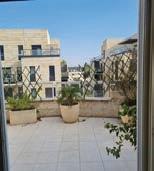

In the heart of BAKA enclosed in a magical courtyard: 3 bedrooms 2 full bathrooms one flight up. Beautiful spacious sukka terrace facing open gardens Completely renovated with architectual design & high level finishes. 6,250,000 NIS
Eta Morris Realty, Ltd.

etamorrisrealestate@gmail.com
Eta: 054-723-3863 · Rachel: 052-546-6425
etamorrisrealty.co.il
in the likeness of God” (Gen. 5:1). Ben Zoma says that there is a more embracing principle, “Listen, Israel, the Lord our God, the Lord is one” (Deut. 6:4). Ben Nannas says there is a yet more embracing principle: “Love your neighbour as yourself” (Lev. 19:18). Ben Pazzi says we find a more embracing principle still. He quotes a verse from this parsha: “One sheep shall be offered in the morning, and a second in the afternoon” (Ex. 29:39) – or, as we might say nowadays, Shacharit, Mincha, and Maariv. In a word: “routine.” The passage concludes: The law follows Ben Pazzi.2
The meaning of Ben Pazzi’s statement is clear: all the high ideals in the world – the human person as God’s image, belief in God’s unity, and the love of neighbour – count for little until they are turned into habits of action that become habits of the heart. We can all recall moments of insight when we had a great idea, a transformative thought, the glimpse of a project that could change our lives. A day, a week, or a year later the thought has been forgotten or become a distant memory, at best a might-have-been.
The people who change the world, whether in small or epic ways, are those who turn peak experiences into daily routines, who know that the details matter, and who have developed the discipline of hard work, sustained over time.
Judaism’s greatness is that it takes high ideals and exalted visions – image of God, faith in God, love of neighbour – and turns them into
2 The passage is cited in the introduction to the commentary HaKotev on Ein Yaakov, the collected aggadic passages of the Talmud. It is also quoted by Maharal in Netivot Olam, Ahavat Re’a 1.
patterns of behaviour. Halacha (Jewish law) involves a set of routines that – like those of the great creative minds – reconfigures the brain, giving discipline to our lives and changing the way we feel, think, and act.
Much of Judaism must seem to outsiders, and sometimes to insiders also, boring, prosaic, mundane, repetitive, routine, obsessed with details, and bereft for the most part of drama or inspiration. Yet that is precisely what writing the novel, composing the symphony, directing the film, perfecting the killer app, or building a billion-dollar business is, most of the time. It is a matter of hard work, focused attention, and daily rituals. That is where all sustainable greatness comes from.
We have developed in the West a strange view of religious experience: that it’s what overwhelms you when something happens completely outside the run of normal experience. You climb a mountain and look down. You are miraculously saved from danger. You find yourself part of a vast and cheering crowd. It’s how the German Lutheran theologian Rudolf Otto (1869–1937) defined “the holy”: as a mystery (mysterium) both terrifying (tremendum) and fascinating (fascinans). You are awed by the presence of something vast. We have all had such experiences.
But that is all they are: experiences. They linger in the memory, but they are not part of everyday life. They are not woven into the texture of our character. They do not affect what we do or achieve or become. Judaism is about changing us so that we become creative artists whose greatest creation is our own life.3 And that needs daily rituals:
3 A point made by Rabbi Joseph
and culturally, without prejudice.
Secondly, as we saw in Parshat Va’era, each of our Forefathers was able to tolerate great frustration without losing their faith in the Almighty.
Shacharit, Minchah, Ma’ariv, the food we eat, the way we behave at work or in the home, the choreography of holiness which is the special contribution of the priestly dimension of Judaism, set out in this week’s parsha and throughout the book of Leviticus.

Thirdly, again in Parshat Va’era, each of them was grateful to the Almighty for the everyday blessings that most of us take for granted.

GERMAN COLONY Existing building with permit to build 250 sqm on a huge lot!
CITY CENTER 4 Bdrms, renovated, elevator, balconies
HOLYLAND / RAMAT SHARET / BAYIT V'GAN
Cottage 235 sqm, 9 rooms, large succah, view, parking !
HAR NOF * Shlav A, 3 bdrms, Succah, storage, view !
* Renovated 4 bdrms, bright and airy, 3 exposures, MB en suite, large succah, no steps to the building !
* Unique Villas for sale, 250- 330 sqm + rental units, outdoor space, parking, view! Many options!
Fourthly, this time in last week’s Parshat Bo, they each demonstrated Kreaturgefühl, a deep awareness of having been created by the Almighty.
In this week’s Torah portion, two early twentieth century spiritual guides brought two additional characteristics of the “redeemed” individual to our attention.
These rituals have an effect. We now know through PET and fMRI scans that repeated spiritual exercise reconfigures the brain. It gives us inner resilience. It makes us more grateful. It gives us a sense of basic trust in the source of our being. It shapes our identity, the way we act and talk and think. Ritual is to spiritual greatness what practice is to a tennis player, daily writing disciplines are to a novelist, and reading company accounts are to Warren Buffett. They are the precondition of high achievement. Serving God is avodah, which means hard work.
Rabbi Grodzinski taught that the “redeemed” individual does not ignore the prevalence of evil in the world but disdains it and confronts it wisely and successfully.
If you seek sudden inspiration, then work at it every day for a year or a lifetime. That is how it comes. As a famous golfer is said to have said when asked for the secret of his success: “I was just lucky. But the funny thing is that the harder I practise, the luckier I become.” The more you seek spiritual heights, the more you need the ritual and routine of halacha, the Jewish “way” to God.
And Rabbi Ziv, the Alter, gifted us with the insight that our relationship with the Almighty can be reciprocal. Yes, He is our Savior. But we can reciprocate His salvation by bringing honor to His name by acting ethically and honestly, even in the face of temptation.
MODIIN AREA - New Project
180 sqm semi detached house, NIS 2,650,000 complete.
YAVNIEL - Villa + Rental Units! NIS 2,490,000!
RENTALS
RECHAVIA Renovated 1 bdrm wheelchair accessible
OLD KATAMON Lovely 2 bdrms, un/furnished, 2 balconies
BUSTAN BAKA Brand new building, 3 bdrms, 2.5 bthrms, ground oor, large garden, parking, immediate!
HAR NOF * Villa, beautiful 6 bedrooms, view!
* Shlav A, 3 bdrms, renovated, garden, view, machsan!
02-651-4030 www.eifermanrealty.com
As we draw ever closer to the Passover holiday, Chag HaPesach, we now have learned of no less than six paths to redemption, six paths to “seeing ourselves as if we personally were redeemed from Egypt.”
These weekly teachings from Rabbi Sacks zt”l are part of his ‘Covenant & Conversation’ series on the weekly Torah teaching. With thanks to the Schimmel Family for their generous sponsorship, dedicated in loving memory of Harry (Chaim) Schimmel. Visit www.RabbiSacks.org for more.
Which of the six will you choose as your path? Or will you try your hand at all six?
FOR MORE DETAILS CALL DAVID:



072.394.2557
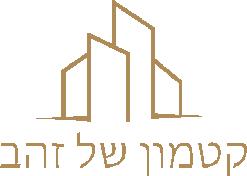

Tuesday night March 7, 2023
Arvit 6:05 Megillah Reading 6:15



New Listing! On the exquisite Dubnov St. in Talbieh, private 135m cottage, totally renovated with 65m private landscaped garden, view from balconies, a real gem! MAYA - 054-6650184
Magnificent Authentic private house on a small dead end of Baka - 650m built on 3 levels with huge basement, 750m plot with wonderful landscaped garden, thoughtful layout, an abundance of light,a unique property!
DEBORAH - 054-4804767
Luxurious garden apartment on a small lane of Old Katamon, 340m built on 2 levels, 8 rooms, separate unit with separate entrance, high ceilings, full of charm, very quiet & bright, 130m private garden, top of the line finishes, close to the park
DEBORAH- 054-4804767
In a small lane of the German Colony, Garden apartment with private entrance, 250m with private garden, parking, high ceilings, in an Authentic beautiful 3 apartment building
MAYA – 054-6650184
Beautiful new penthouse in Greek Colony- 190m with 80m terraces, succah, beautiful views, 5 rooms, elevator, parking, renovated at very high standard, spacious living areas and huge kosher kitchen
MAYA – 054-6650184
On the edge of The German Colony - Unique Authentic building of 700m built on a huge plot of 1,200m - perfect for an apartment building or a tremendous private house.
DEBORAH - 054-4804767
Private small building in Baka, Shimshon St. 300m with additional building rights, huge private garden, divided into 3 units so can be private house of 3 separate apartments, very attractive price
DEBORAH - 054-4804767
On the exquisite Elcharizi St., Rechavia, new project, new 280m penthouse, 100m terraces, finishes and layout according to buyer requests!
DEBORAH - 054-4804767
Ben Maimon St. Duplex new apartment, 5 bedrooms, 4 ensuite, 4 terraces, private parking, Shabbat elevator, all renovated, 3 exposures, very sunny!!
DEBORAH-054-4804767
And you shall speak to all the wise hearted, whom I have filled with the spirit of wisdom, and they shall make Aharon’s garments to sanctify him, [so] that he serve Me [as a kohen]. (Shemot 18:3)
In this week’s parsha, Moshe is instructed to speak with certain individuals who are to fabricate Aharon’s garments. These individuals are referred to as בל-ימכח, wise-hearted people. Typically, wisdom is connected to one’s brain, not their heart. The heart is associated with one’s emotions. What is the Torah seeking to teach us by connecting wisdom to the heart?
Rabbi Norman Lamm z”l in his sefer Drashot L’Dorot offers a compelling idea, which he relayed in the 1950’s but that holds true today. Man has a great quest for knowledge. He cites a NY Times article that states that we have so much knowledge, that even if all research would abruptly stop, we would have enough work ordering and utilizing the knowledge we have for the next century. This statement was made even before the internet was established which supplies us with unprecedented amounts of data on any topic desired.
Another fact cited by Rabbi Lamm is that
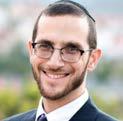
more people have been killed by automobile accidents than in all the American wars combined. That does not lead to the conclusion that we are better off without automobiles. Rather it demands that along with modern technological advances man ought to engineer his conscience as well to take better care when driving and valuing human life. Wisdom without conscience yields to misuse of knowledge. The atom bomb was an ingenious invention, but it led to horrific destruction. Man was able to decipher the “nature of the atom but neglected the nature of the sons of Adam.”
Perhaps what the Torah is teaching us is that to properly apply the wisdom we acquire, we are to ensure it does not remain the wisdom of the mind – but rather that it is transformed into the wisdom of the heart and soul, of feeling and faith and of reverence and ethical behavior.
It is no coincidence that each morning when we wrap ourselves in tefillin, we place one on our head and the other on our arm, adjacent to our heart, symbolizing the connection between the mind and the heart. As we live in a society overwhelmed with information, we ought to make sure that we apply the knowledge we obtain with our conscience- as a wise-hearted individual. Always taking into consideration how we utilize the information we acquire, so that it can enhance our lives and the lives of those around us.
Walking down King George St. in Jerusalem and want a cold bottle of water?
Come help yourself to a bottle at 52 King George.
In loving memory of Yoni’s wife

Tziporah a"h, a true Eishes Chayil, always full of chessed, kindness and laughter, and brought life and strength to so many people, that she touched! She was like Aron, who loved peace and pursued peace.

Yoni thanks Hashem for having the opportunity of having Tziporah in his life, to learn of her caring, patience and happiness, to overcome her challenges. May
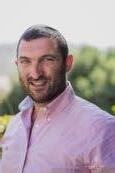
Tziporah's Neshama be a light onto the world, in a time of darkness, and may her Neshama shine to Gan Eden. Yoni misses Tziporah with tears in his eyes, as Hashem gave him a gift, a crown jewel, now he returns her to Hashem. With thanks and Toda. Love, Yoni
To help refill the supplysend tax deductible donations for Be’er Tziporah a"h Bottled Water Gemach to Chabad of RechaviaRabbi Yisroel Goldberg email Rabbi@JerusalemChabad.org

02 800-1717
www.JerusalermChabad.org/DonateShekels







at Beit Tovei Hai'r
Beit Tovei Ha’ir invites you and your friends (70+ and independent) to a sumptuous brunch with Kalman Samuels, the founder of Shalva. Mingle with friends at Jerusalem’s premier residence for religious seniors, and tour our new apartments and fitness center.

Monday, March 13, 2022 | רדא 'כ from 9:45 am | 36 Rehov Malchei Yisrael, Jerusalem

Free event for relevant participants. To reserve your place, contact Binyamin Margo at 054-446-5276


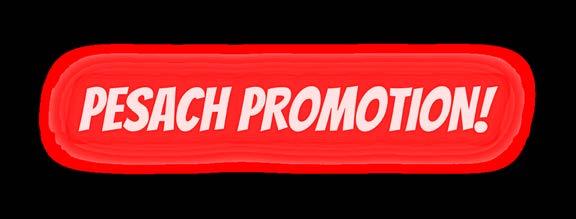


Jewish tradition is rich with symbolism. Even the foods that we eat on different occasions have deeper meanings and significance. “Hamantaschen” are no exception, there is a lot we can learn from these little triangular filled treats.
The meaning of the word “hamantaschen” originates from two words, “mohn”, meaning poppy seeds, which was traditionally used as a filling and “tasch”, which in Yiddish means pocket. So, a hamantasch is essentially a pocket pastry filled with poppy seeds. According to chazal, both Esther and Daniel/Hatach existed on a diet of vegetables and seeds, symbolized by the poppy filling, enabling them to keep kosher while living in the palace of Achashveirosh.
Rav Pinchas Friedman in Shivilei Pinchas explores a deeper dimension of this sweet and tasty snack. He notes that the letter “vav” is found as the first and last letter of the Megillah, and the middle pasuk, “vta’an Esther – and Esther answered…” (Esther 5;7), begins with the letter “vav” as well. What
Faculty, OU Israel Centersignificance does the letter “vav” hold? In “Atkinu Se’udata”, the zemer/prayer said before beginning the seudat shabbat, inviting the holy Shechinah to join our shabbat celebration, we say, “b’vavim titkatar – connect with ‘vav’”. Rav Dovid of Lelov explains that the connection referred to here is the one between Hashem, the Torah and the Jewish people. We find this hinted at in the three different ways one can spell out the letter ‘vav.’ One combination is vav, alef, vav, whose numerical value is 13, the same value as the word ‘echad,’ reflecting the Oneness of Hashem. Another combination is vav, yud, vav, whose numerical value is 22, reflecting the 22 letters in the alef bet, a reference to Torah. The final combination is vav, vav, equaling 12, referring to the twelve tribes of the Jewish people. We now can appreciate the deeper meaning of the words, “v’chai bahem – and live through them.”(Vayikra 18;5) Chai, as we know, is 18, which is three times ‘vav’ (6). When we take the total value of the inner dimension of the spellings of ‘vav’, we get a total of 47, the same numerical value as the word ‘bahem.’ The Torah is telling us, “v’chai bahem”, live with this intertwined relationship between Hashem, Torah and the Jewish people.
Haman’s schemed to break this threeway connection. He understood that it was the only way the Jewish people could be destroyed. It is fascinating how chazal show us the moment when it became clear
to Haman that his plan would fail. When Haman arrived to fetch Mordechai to lead him on the king’s horse, chazal note that Mordechai was teaching the laws of taking a “kemitzah”, the proper amount of flour for a korban mincha. (Maseschet Megillah 16a) When Haman heard what they were learning he exclaimed, “The fullness of this omer will counteract the 10,000 shekels offered to destroy the Jewish people!” Rashi explains that a “kemitzah” was taken using the three middle fingers. The Zohar teaches that the three fingers resemble the three “vav”s, signifying that the connection between Hashem, Torah and the Jewish people is unbreakable.
The word “tash” also means ‘weak in Hebrew. When we eat these pastries, we highlight Haman’s weakness. How so? A hamantaschen is triangular in shape, made up of three sides, each side looks like the


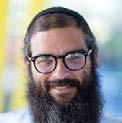
Legendary British financier, banker, activist, and philanthropist, Sir Moses (Moshe Chaim) Montefiore, zy’a, was not only the beloved rosh ha-kahal of the British Jewish community, he was an influential leader who promoted economic development, education and building for the Jewish People worldwide.
Though not particularly observant early in life, after a transformative visit to Eretz Yisrael in 1827, Montefiore was spiritually inspired and committed himself to the practice of Yiddishkeit and Jewish activism. Later, having gained unprecedented access to halls of power and influence, he was moser nefesh for his Jewish brethren as he represented his people before world leaders, including


the Pope and Czar of Russia.
On his way to meet the Czar to intercede regarding a particular gezeirah, an evil antisemitic decree, he was traveling in a stately coach accompanied by private security and surrounded by an entourage. As he passed through a village on the outskirts of Moscow, a small group of Russian peasant children threw stones toward Montefiore’s coach and shouted derisively “Zhid! Zhid!” Immediately, he instructed his coachman to stop and bring the thuggish kids to him. The coachman jumped at them, grabbed a couple by the scruffs of their necks and hauled them toward Montefiore’s seat.
“Little children,” he sighed, stepping down from the coach to look the frightened perpetrators in the eyes, “back in England, I am referred to by my honorary title of ‘Sir’, and around the world, powerful men stand for me and address me as ‘Lord Mayor’. But know this: no honorific that I have ever received is as meaningful a praise as the one you have just given me by calling me a Zhid,
a Jew. Thank you!”
Montefiore then smiled and handed each child a golden coin before returning to his seat, and saying, “Thank you for reminding me who I am.”

This Shabbos we read Parshas Zachor, a reading which infuses us with the Biblical mitzvah to bring to mind the senseless hatred that drove Amalek to attack the weak and infirm among us. Without an intention to benefit from our land, property or belongings, Amalek was simply driven by bloodthirst and the most ancient form of hatred. Publicly reading this parshah in advance of Purim threads a narrative, connecting the motives of Amalek with those of Haman, as well as insisting that we recognize the relevance of this mitzvah for us today.
“And Yisro, the priest of Midian, the fatherin-law of Moshe heard all that Elokim did for Moshe and Yisrael, His people….” (Shemos, 18:1)
Rashi points out that Yisro heard about two major events that made an impression on him to the point that it changed his life. These were Kriyas Yam Suf, the splitting of the Sea, and the war with Amalek. An additional opinion expressed in Gemara (Zevachim, 116a) by Rebbi Elazar haModa’i is that Yisro also heard about Matan Torah, and this was the inspiration for Yisro to convert and cast his fate with Am Yisrael. The seminal events of Kriyas Yam Suf and Matan Torah express the two main aspects of our chosenness as a people: the revealed love for us at the Sea, and our intimacy with Hashem in the revelation at Mount Sinai. Yisro also
came to understand the reality of what it means to be a Yid, that there is such a force as Amalek and a price-tag to chosenness.
Anti-semitism in fact serves as a reminder of who we are, that we are indeed different from all other nations. When we are singled out, we are stimulated to question what it is that sets us apart. And this gives us the opportunity to reassert our commitment to the spiritual and international obligations we carry.
Rav Joseph Soloveitchik maintained that those who sow hatred of Am Yisrael in the world are the disciples and ideological descendants in the spiritual lineage of Amalek. Today, the dramatic surge in antisemitism worldwide makes Shabbos Zachor all the more relevant:
“Hashem is at war with Amalek from generation to generation.” (Shemos, 17:16).
There is sweetness in being empowered as active partners with the Ribbono Shel Olam, and knowing that we are not alone. Whether it emanates from the ideological Right, the ‘woke’ political Left or the politicians in the United Nations — or whether it is expressed on social media or even on the streets of our own Homeland — we can stand tall in the face of our enemies’ derision and hate. We can stand with our people, with holy pride
in who we are, and with joy and faith in our purpose in this world.
Mordechai lo yichra, lo yishtachaveh, “Mordechai did not kneel and did not bow” to anti-Jewish powers. Rather he stood tall in joyful defiance, unabashed of his Yiddishkeit, and unafraid to display religious symbols and behaviors, even in a time of great physical threat.

Parshas Zachor thus prepares us for Simchas Purim, when kimu v’kiblu haYehudim, when the Jews established and accepted their historical mission. We, too, are prepared to reassert our desire to live with Torah, as well as our willingness to make sacrifices in maintaining our Jewish identity. It is this desire and willingness that becomes a source of celebration and joy on Purim — and every day. Perhaps this year, while distributing d’mei Purim, we ought to flip a coin or two to all the haters out there, and thank them for helping us to remember…
The story is told that Montefiore was once at a dinner party, seated next to a known anti-Semite. This man told Montefiore that he had just returned from a trip to a distant country “where they have neither pigs nor Jews”. Montefiore quipped: “In that case, you and I should go there together…so it will have a sample of each!”




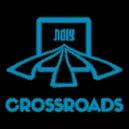











Director Hadassah Jacob 052-384-7230
Monday Evenings 7:00 - 9:00pm
Please note the updated mailing address for the OU Israel Center: OU Israel
22 Keren Hayesod
POBox 1441
Jerusalem 9101302
PRI HADASH
WOMEN'S WRITING WORKSHOP AT THE OU ISRAEL CENTER
Resumes March 13th:
Monday mornings 10.30-12.30
For more details, call Ruth 02-628-7359 or Judy 054-569-0410
...המלש האופר
• Miriam Tovah Chaya bat
Chanah Elisheva Rivka
•Yosef Ezriel ben Chaya Michal
הלחמ ןב ןתנוהי
רתסא ןב המלש
השנמ םהרבא
• Esther Fruma bat Baila
• Yisrael Leib ben Chana
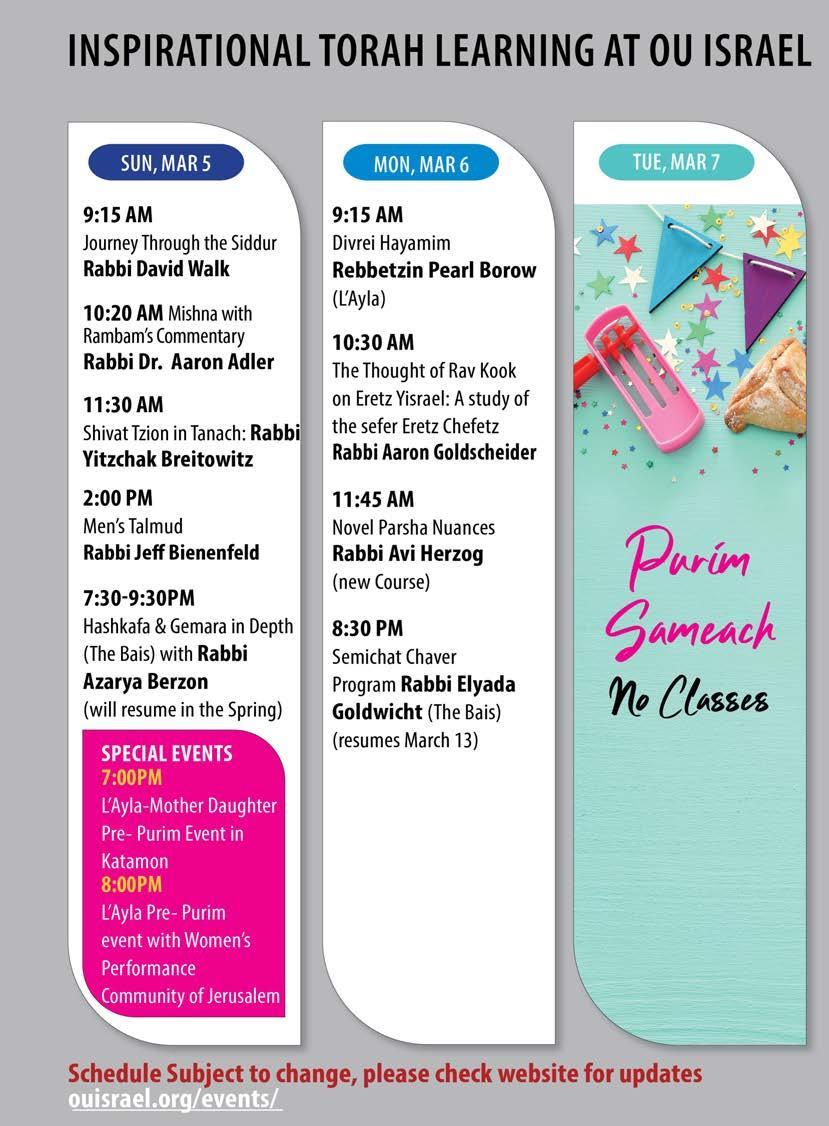
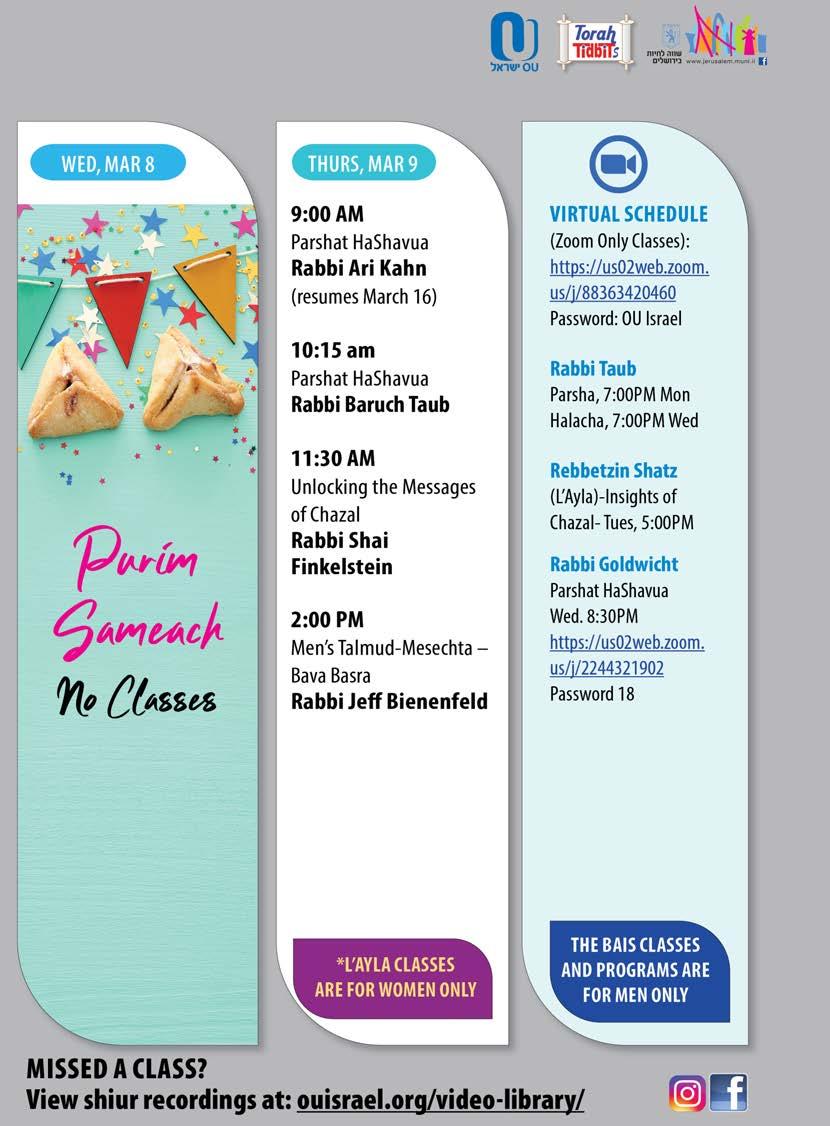




GET A BACKSTAGE VIEW OF GEMARA IN HADRAN'S

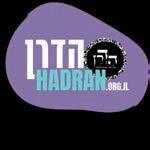

NO BACKGROUND REQUIRED

ON ZOOM SUNDAYS MARCH 5, 12, 19 WITH RABBANIT


OR ON VIDEO

LEAH SARNA
FOR MORE INFO HADRAN.ORG.IL/COURSES Free course, registration is required Open to women and men

035774277/0522867038


MOSHE KENAN
We buy gold, silver, coins, Judaica, old sifrei kodesh, banknotes, medals, collectables, antiques, sports memorabilia and more.

Ran: 054-5561223


synagogues, and parks. Cute garden, Sukkah balcony. Mamad, master suite in the attic with a sunny balcony with an open view. Requires renovation. NIS 3,500,000

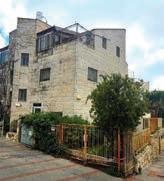

- Noa: 052-870-2387
JLM: Cozy apt full of light in Machane Yehuda, 2BR apt in all the action. Full of light and fresh air. Excellent location. Well-kept apt. 45m². Balcony 4m². Storage unit. Rented 4400/month. 4th floor walk-up. PRICE REDUCED! NIS 1,910,000 (was NIS 2,000,000)
- Mendel: 052-720-3497
MITZPEH YERICHO: Fabulous Home with charming private yard of 70m², 6 BR, 165m² built. A/C, storage unit, mamad. With rental unit


- great potential for rental income. Well maintained, in like new condition. Option to purchase existing furniture.








NIS 3,390,000
- Mordechai: 052-720-3089

“TzviAir is a pleasure to work with and did an amazing job!”
– Jamie Geller, Celebrity Chef






SUNDAY EVENING, APRIL 16, 8:00 PM in the Pelech Girls school – 31 Yehuda St., Baka but ONLY by prior registration and payment
Cost: 100 NIS per person
Ifyou registerbeforePesach,(April5)you’ll receivea Destinygiftworth100NIS!

Limited seating. (Price of the film ticket increases after Pesach [April 5] to 180 NIS per ticket!)
If you cannot be in Jerusalem the night of the Premiere, you can still see the film in your home on Sunday evening April 23 at 8 PM ON ZOOM (exactly one week later)
100 NIS on Zoom per family
BECOME A DESTINY SPONSOR OF THE PREMIER AND SUPPORT RABBI WEIN & DESTINY

Best seats, light dinner & meet privately with Rabbi Wein before the film 500 NIS per couple
For questions, sign up forms, information, payment, email Shira at abarbanelmovie@gmail.com or WhatsApp 0547-54-36-18
The Shabbat which immediately precedes the festival of Purim is known as Shabbat Zachor, the Sabbath of Remembrance. On this Shabbat, we read of the biblical mandate to remember how the tribe of Amalek attacked the Jewish people as we departed from Egypt. This passage is read specifically on the Shabbat preceding Purim, since Haman, arch enemy of the Jews of Shushan and villain of the Purim story, is a descendant of Amalek.
The passage we read is the very conclusion of Parshat Ki Tetzei (Devarim 25:17-19).
“Zachor-Remember what Amalek did unto you, as you were en route of departure from Egypt. Asher Karcha BaDerechHow they came upon you on your way, and struck the back of your encampment, all that were enfeebled in the rear of the camp, when you were faint and weary; they did not fear G-d. Therefore it shall be, when the Lord your G-d has given you rest from all your enemies, in the Land which the Lord your G-d has given you as an inheritance to possess it, that thou shall blot out all remembrance of Amalek from under heaven, lo tishkach- you shall not forget...”
BY RABBI SAM SHOR Program Director, OU Israel Center


Rashi, citing the Midrash Tanchuma offers an interesting insight regarding the words Asher Karcha BaDerech-How they came upon you on your way.
Asher Karcha BaDerech, this is connected in meaning with the phrase םוחו רוק “cold and heat” and it means: he made you cold and lukewarm after the boiling heat you had before. For all the nations were afraid to war against you and this one came and began to point out the way to others. A parable! It may be compared to a boiling hot bath into which no living creature could descend. A good-for-nothing came, and sprang down into it; although he scalded himself he made it appear cold to others...
Rashi suggests that Amalek somehow represents the Jewish people, being cooled off, becoming vulnerable once again to our enemies, and the powers of evil.
The Piascezna Rebbe, the Aish Kodesh zy’a, offers an interesting explanation of this midrash cited by Rashi. The Jewish people, having just witnessed the miracles of the ten plagues and incredible redemption from Egyptian servitude, were literally on fire with a burning faith and trust in Hakadosh Baruch Hu. Amalek comes and cools us in our derech, they cool off our
religious passion, they represent foreign ideas which come to knock Klal Yisrael off of our proper derech, they cause us to be cooled off, in terms of our commitment and passion in Avodat Hashem,making us to be susceptible and in danger not only spiritually, but physically.
The great Chasidic Master, the Maor VeShemesh, zy’a offers a beautiful insight to explain this idea of Amalek cooling off the Jewish people and becoming vulnerable.
Amalek cooled the Jewish people, they caused the Jewish people to be cold toward one another, they cooled off their burning good hearted kindness for one another.
What was it that Amalek caused to happen that made us vulnerable and susceptible to harm? A lack of warmth,empathy, and love for one another.
As we prepare ourselves for Shabbat
Zachor, let us work to internalize this powerful short teaching from the Maor VeShemesh,zy’a- and may we recognize the power and protection that achdut-unityprovides for Klal Yisrael.

TRANSFER YOUR OLD FILM/VIDEO's (All formats) In Quality to Digital Preserve Family History from Fading
Michael 052.286.8626
Photography with feeling Facebook.com/L'Dorot Photography
Dr. Yirmiyahu Barron, MD
Internal Medicine and Geriatrics
Certified Specialist in the US and Israel
Former faculty member, Johns Hopkins University
Adult Medical or Geriatric HOME VISITS
058-323-1966
dr.ybarron@gmail.com
(Not Kupat Cholim Leumit)
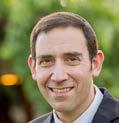
Megillat Esther is a delicately textured narrative incorporating multiple story lines. It weaves together Jewish history, divine intervention, and moral courage, all amidst the backdrop of our ongoing battle with Amalek. To tease out the hidden themes of the Megillah, Chazal prefaced their teaching of this sefer with a pasuk from Tanach.
Shmuel, the Amora, prefaced his own lessons of Megillat Esther with a pasuk from the tochacha of parshat Bechukotai:
separated by 18 years. Living in the lap of Israel, in the Land of Hashem for close to 900 years, we had assumed that we were invincible. Chosen by Hashem and gifted with His Mikdash, we led a charmed existence, immune to any foreign invasion. Even our persistent religious betrayals couldn’t dislodge us from our Homeland and our destiny. We assumed it would never end. One day it all did.
The day after the Mikdash was destroyed we awoke to an apocalyptic world of destruction and devastation. Life in the Land of Israel is that fragile, and if our behavior is undeserving, we are removed.
Hashem reassures us that even when we are lost in the land of our enemies, He will never spurn us nor allow us to be obliterated. Undoubtedly, a pasuk promising divine protection in foreign lands showcases our delivery from the Shushan genocide. This pasuk of never despising the Jews however, alludes to a much broader aspect of the miracle of Purim.
Purim didn’t occur in a historical vacuum. A little over seventy years earlier, we were exiled to Babylonia in two successive waves of expulsion which were themselves
The Babylonian gallus wasn’t oppressive, but it was disheartening. Witnessing monarchs ascend and descend the historical stage, we began to fear that history had discarded us. The mighty Babylonian empire ceded to a sweeping Persian kingdom which spread its influence over a vast multi-regional empire. Amidst these rising and dominant empires, the prospect of renewed golden era of Jewish prosperity seemed unlikely.
Even more depressing was the state of the Jews back in their Homeland. A few years prior to the Purim miracles the reconstruction of the second Mikdash had been launched, under Persian authorization. Unfortunately, the process stalled in the face of local opposition to Jewish expansionism. Jewish history appeared to be stalled in
the palace intrigue and garden luxuries of Shushan. To the merry participants of the 180-day party in Shushan, a return to the wastelands of Israel must have seemed very remote.

And then, suddenly, out of nowhere a genocidal threat emerged. Everything seemed perfectly aligned for this ghastly scenario. Haman was promoted and entrusted with unlimited power, and, additionally, he was flush with the funds to sponsor his ethnic cleansing.
At the onset of the Babylonian exile, we had wielded considerable political clout, as Daniel the prophet was an admired advisor of Nevuchadnezzar. However, under the new political alignment in Persia, we had little political influence and little ability to reverse the horrific decrees. No one knew that Esther was Jewish, and no one held out any hope that this unknown queen could rescue us from oblivion.
All seemed lost. We had betrayed Hashem, forfeited both His Mikdash and His Land, and had become completely acculturated within Persia. Evidently, Hashem had also abandoned us and was in the process of selecting a different nation to be His chosen. Each ascendent empire was a potential replacement for the discarded Jewish chosen people.
Haman certainly banked upon this narrative. He was a sharp student of history, who clearly appreciated all the miracles Hashem had performed for us …in the past. Haman reckoned that the Jewish people had abandoned their chosen status, and were now just like any other nation, or, as he announced םימעה ןיב דרפמו רזפמ the Jews could finally be
vanquished. The wheels of Jewish history were coming off.
Until the great reversal. We fasted, and prayed for Hashem’s intervention and, within days, the narrative of Jewish deselection was debunked. By rescuing us in the land of our enemies Hashem reminded us, and cautioned humanity that our selected status was irreversible. Thousands of years earlier, Hashem had chosen our ancestors, and there was no going back on that decision. We may not always merit living in the Land of Israel, but we will never be cast aside by Hashem. Shmuel prefaced his Purim study with a pasuk which announced the irreversibility of Jewish selection. Our historical covenant will never be rescinded.
The midrash reports of a competition among the trees of Shushan to provide the wood for Haman’s gallows. Each tree’s resume was more impressive than the other. Some trees, such as the etrog tree, facilitate mitzvot, while others, such as the fig, apple, and olive trees, symbolize the Jewish nation. Each tree felt best suited to hang Haman by the neck. Ultimately, Hashem selected a simple thorn tree for the infrastructure of Haman’s execution.
Amazing
5 minutes from Emek Refaim, 40 min walk from the Old City, 6 bedrooms - sleeps 15+,
5 bathrooms, 3 floors, 200m, large kitchen, large yard (with basketball hoop), Strictly Kosher
Available March 30 - April 17
For more details: 052-238-0638
Robert@kleimanrealestate.com
Despite the more attractive options, Hashem chose a simple tree to advance Jewish redemption. This odd competition between trees and Hashem’s selection of a simple model, parallels an earlier desert competition between various mountains vying to host the delivery of the Torah. Just as Hashem selected a simple mountain of Sinai, he chose a modest tree in Shushan. By evoking Sinai, the midrash emphasizes that Purim led to a renewal of Sinai, as the gemara in Shabbat (88) claims המ ומייק רבכ ולביקש: in the aftermath of Purim we reaffirmed the commitments of Torah. The selection of a simple tree parallels the selection of an unadorned mountain.
With one big difference. A desert mountain was designated to host the delivery of Torah and mitzvot, whereas a tree in Shushan was selected to execute an enemy.
Ideally, we are meant to abide by the covenant of the mountain- to adhere to mitzvot and remain in our Land. At this stage of history, though, it became apparent that the covenant of the mountain would not always withstand the forces of human nature or the pressures of history. Halachic adherence would regress, and commitment to our Land would falter. Even when afforded the option to return to Israel, we would not always emigrate. We had become too culturally embedded in Persia, attending extended debauched parties rather than battling for Yerushalayim. A few years after Purim, Ezra and Nechemiah relaunched our return to Israel and led a faction of Jews back to their Homeland. Unfortunately, this faction only numbered 42,000 people. The rest of our people opted for the comforts of Shushan
over the battlegrounds of Israel.
By this point it was clear that Jewish history would take a very different trajectory. Without loyalty to mitzvot, we would be consigned to live amongst our enemies. Even when the doors to Israel flew open, Jews would still opt to remain in foreign lands. As foreigners, we would face hatred, hostility, and existential threats to our survival. The mountain covenant of mitzvot wasn’t broad enough to cover the full sweep of Jewish history. Jewish history demanded a different covenant.
After Purim, Hashem established a covenant of protection rather than a covenant of mitzvot. Selecting a tree was similar to selecting a mountain in that Hashem was choosing the platform for a covenant. However, the covenant of the trees offered us protection even while residing in the land of our enemies. Carefully choosing a tree to hang Haman reminded us that although we may live far from home – by choice or by divine decree- we would still merit divine attention and divine protection.
In a deeply powerful scene, Moshe Rabbeinu is found with his hands held high on top of the mountain praying for the people gripped in a raging battle with Amalek below. Ahron and Chur stood on either side of Moshe Rabbeinu holding his hands aloft (Shemot 17;10). Rashi teaches that Chur was the son of Moshe’s sister, Miriam. What more do we know about Chur?
What is the symbolism of his joining with Ahron to support the hands of Moshe Rabbeinu?
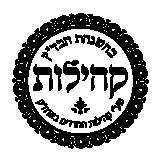


Rabbi Roberts in Through the Prism of Torah explains that Ahron and Chur personified contrasting character traits. Ahron was a peacemaker, he constantly looked for ways to create harmony among his people. Indeed, he was ready to compromise his own values to achieve this goal, as we see in the story of the sin of the golden calf. Chur,
For two thousand we aspired to the covenant of mitzvot upon a mountain, but survived by the covenant of the tree and its protection from our enemies. As we inch closer to the end of history and return to the great mountain in Yerushalayim, hopefully the covenant of the trees becomes less necessary. We are back home and are no longer living in the land of our enemies. Mountains are always better than trees.

Premium delicious shabbes meals



Openning hours:


Thursday 12 pm-2 am
Friday 8 am-3 pm
on the other hand, was a person who stood strong in his values, unbending and resolute in his beliefs. Chazal teach that Chur tried to challenge the people when they wanted to build the calf and they subsequently killed him. Chur, a descendent of Yehudah, was a person who was inflexible and strong like a lion. Truly, a combination of both qualities is necessary. In interpersonal relationships it is wise to follow Ahron’s path, to compromise and make peace whenever possible. However, in the service of Hashem and reinforcing kevod shamayim, one needs to follow Chur’s example and be resolute in his values. These two special people joined Moshe Rabbeinu to activate the merits of these approaches as he implored Hashem to have mercy on His people and vanquish Amalek, physically and spiritually.
For
In a unique Old Arab style building - Spacious 110sqm, 4 room apartment with Sukah balcony, Shabbat elevator, parking & large separate storage room. lots of character, excellent condition, central A/C Truly one of a kind! 5,280,000nis
For Sale – Old Katamon, Negba st., 1st floor, Arab house, 4 rooms, (total about 160m), high standard of renovation, Sukkah porch, 2 full bathrooms + guest bathroom, central a/c, elevator, parking, small machsan, asking $2,550,000

We read in this week’s Haftorah of Shaul’s battle with Amalek, and his failure to obey the Torah command of obliterating Amalek. What is it about Amalek that we are charged to not merely to wipe out Amalek, but also to eradicate its memory? After all, the posuk in Devarim states that we must erase the memory of Amalek,
- You shall blot out the remembrance of Amalek. This is an extremely dramatic demand, that Amalek not just be physically annihilated, but must even be removed from our minds. Such a harsh edict! Not only are we commanded as such, but in Sefer Shemot we learn that Hashem Himself takes an active role in this process as the the posuk states,
, I will utterly blot out the memory of Amalek from under heaven! What is it that Amalek represents and how can we today observe this mitzvah in a conceptual manner?
Rashi explains that Amalek came with the tactic of הרקמ “a sudden happening”, by surprise, unplanned. Amalek’s approach embraces the concept of randomness, a world with no Supreme Being. What we are charged with in reading Parshas Zachor and its Haftorah, is to choose
deliberately and decisively. Deliberate choices and decisions demonstrate an appreciation for our human capacity to choose between good and bad and obligates us to choose wisely. When Shaul embarks on his mission to fight Amalek, he equivocates as the posuk states, בֶרָּיַו לַחָּֽנַּב. The Radak explains that he fought with himself, whether he should or should not annihilate another nation as per Hashem’s directive as was communicated by Shmuel.
A decision moment gives us the opportunity to gather information to evaluate our options, assess and hopefully make the right decisions. By carefully considering the implications of our actions and making good choices, we can erase Amalek and eradicate its evil ways.

israelrescue.org/jlmmarathon23


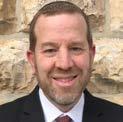
Just as the practical mitzvot in general, in their fullness, went with us in exile and preserved for us in exile our vitality and our inner, essential spirit, bringing us to these days, the beginning of the period of the resurrection of the desire of national renaissance in our Land, so the mitzvot dependent on the Land will bring us to the upliftment of life, as they (those mitzvot) were determined by life’s full dimension (Eretz Chefetz 3:5).
As the Jewish people in our day have returned to our Land more of the mitzvot dependent on the Land are being observed. Rav Kook envisioned the enthusiasm for these mitzvot growing and sensed that these mitzvot were drawing the nation of Israel closer to the day that we will observe them fully in the time of Redemption.
The laws of Maaser, Terumah, and Shemita are a few pronounced examples of laws being practiced once again, albeit not in their fullness, with the absence of the Beit Hamikdash.
However, it is noteworthy that expressing our anticipation of the rebuilding of the Beit Hamikdash by means of observing a certain set of laws has always been close to the
heart of the Jewish nation. The institution of Zecher LeMikdash is a prime example of this.
Rabbi Yochanan ben Zakai was one of the main architects of Zecher LeMikdash (see Talmud Rosh Hashanah 30a). He lived through the Churban and had the task of rebuilding and strengthening the Torah after the tragedy. Chazal learned the concept of Zecher LeMikdash from the book of Yirmiyahu, who laments that no one was seeking out - doresh - Zion during exile. Thus, Chazal, instituted that we must find ways in our daily life to seek out Zion.
Yirmiyahu was echoing a verse in the Torah that instructs us to actively seek outdrash - the Shechina in the Temple (Devarim 12:5)
Rav Kook explains that the purpose of Zecher LeMikdash is to keep alive and ever-vibrant a Jew’s longing for the mitzvot attached to the Mikdash, which in itself, says Rav Kook, is instrumental in our actual redemption.
Rav Kook himself observed a unique custom of Zecher LeChurban: Tikkun Chatzot. This is an ancient custom, put into practice, of course, following the destruction, to awake each night at midnight and mourn the destruction of the Temple. Rebbe Nachman of Breslov, among others, advocated this practice (Likutei Moharan, no. 67).
Rav Moshe Tzvi Neriya, in his exquisite monograph about the life of Rav Kook cites
Rav Kook’s notes on the Tur, Orach Chaim, printed in Mitzvot Re’iya, where he discusses the legal aspects of rising at midnight. He concludes that while every Jew is obligated to mourn the destruction of the Temple, the God-fearing should punctiliously recite Tikkun Chatzot, and the most pious should be awake at the exact moment of midnight. It is known that during the first years Rav Kook lived in Jerusalem, he regularly recited Tikkun Chatzot at the Kotel.
Rav Neriya reports the following episode from Rav Kook’s youth: “The Rav’s childhood friend Avraham Sho’ar described how they would recite Tikkun Chatzot together during the Three Weeks: ‘Every night at midnight, Avraham Yitzchak would close the Talmud. We would descend the bima, where we learned at night, and stand near the large furnace, remove our shoes, and sit on the floor to recite Tikkun Chatzot - two small boys weeping over the destruction… He possessed an uncommon love for Eretz Yisrael and a longing for the rebuilding of the Temple and the coming of Mashiach.
“I once asked him in my childhood naivete, ‘why do you weep so intensely during the reciting of Tikkun Chatzot? I also love Eretz Yisrael and my soul, too, yearns to immigrate to the precious Land. His answer, spoken with natural innocence, startled me into silence. “You are not a descendant of kohanim…you aren’t a Kohen. But I am a kohen!” (Celebration of the Soul, Jaffe, pp. 250-251)
Rav Neriya reported another remarkable
incident regarding Rav Kook reciting Tikkun Chatzot:

A student of Rav Kook, Rabbi Shimon Starlitz, wanted to witness first hand the Rav’s customs. He knew that the Rav regularly studied late at night in his small study. He hid behind a couch. Midnight came. The Rav entered. Lit a candle, sat on the floor, and began reciting the verses from Tikkun Chatzot. He began with quiet restraint, but after a few minutes the words spewed forth and hot tears poured down his cheeks. As time passed, the Rav’s weeping and lamenting became so intense that Rabbi Shimon could not stand the excruciating grief. His heart grew tight with sorrow, and he lacked the strength to remain until the end. In the darkness of the room, he was able to sneak out of his hiding place and escape unnoticed (Ibid., pp. 251-252).
(for guest feedback, see Google Maps Isravilla)

ISRAVILLA IS AVAILABLE FOR PESACH. ACCOMMODATES 50+, HEATED POOL, TOTALLY SECLUDED QUIET EXPANSIVE ESTATE.

Question: What is the operative result of the concept of kol haposhet yad notnim lo (= kpynl – whoever extends his hand to receive is given)?

Answer: There is little discussion in the poskim on kpynl but two sources in Chazal touch on it. The Tosefta (Megilla 1:5, cited in Bava Metzia 78b), in discussing that money earmarked for Purim should be used for it, says that we are not medakdek (exact) in the matter; it does not explain what that means practically. The Yerushalmi (Megilla 1:4) says we are not medakdek on the mitzvot (Ritva, Bava Metzia ibid. – money) of Purim. It adds, “but rather kol haposhet yad notnim lo.” The Shulchan Aruch (Orach Chayim 694:3) codifies these words in the siman that discusses matanot la’evyonim (=mtlevy).
Rashi (Bava Metzia 78b) says that the case discussed there is a gabbai tzedaka who collected money to be used by the city’s poor for
seudat Purim. If the Yerushalmi and Shulchan Aruch also refer to that, it is unclear if kpynl is a halacha of mtlevy. Specifically, the sources imply that the public collection was in addition to people’s personal practice of mtlevy. The fund was a form of public tzedaka, which we find for example regarding making sure the poor have wine for the seder (Pesachim 99b) or ma’ot chitim. Accordingly, the gabbai of these funds is instructed to give to whoever requests it.
What need is there for a special collection for the Purim seuda of the poor if that is the main purpose of mtlevy (see Mishna Berura 694:2); wouldn’t all the townspeople’s mtlevy suffice for one meal for them? There are a few possibilities. 1) According to many, a mere peruta suffices for mtlevy (see ibid.), so that the poor might not have received from mtlevy enough for a nice meal; 2) The poor person has the right for a fancy meal that even average mtlevy will not cover (Bava Metzia 78b may imply this; see Ramban ad loc.); 3) For various reasons, some evyonim will not receive, so the gabbai ensures all have enough.
Some understand kpynl as relating to mtlevy. The Ramban (ibid.) says that in light of kpynl, there is a minhag (mentioned by the Shulchan Aruch ibid.) to give on Purim even to non-Jews. The Beit Yosef (OC 694) cites objectors, since mtlevy is supposed to go to Jews (all agree that tzedaka money may go to non-Jews – see Gittin 61a). This (from Shulchan Aruch’s author) implies that kpynl can
The Orthodox Union - via its website - fields questions of all types in areas of kashrut, Jewish law and values. Some of them are answered by Eretz Hemdah, the Institute for Advanced Jewish Studies, Jerusalem, headed by Rav Yosef Carmel and Rav Moshe Ehrenreich, founded by HaRav Shaul Yisraeli zt”l, to prepare rabbanim and dayanim to serve the National Religious community in Israel and abroad. Ask the Rabbi is a joint venture of the OU, Yerushalayim Network, Eretz Hemdah... and OU Israel’s Torah Tidbits.
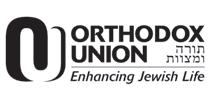

be relied on to fulfill mtlevy. The Ritva (Bava Metzia ibid.) explains that we need not be exact and ensure that the intended recipients of mtlevy (the poor) receive because the spirit of the day is to funnel happiness into giving, with one’s intention to include the poor, but that anyone who claims to fit suffices. (There is significant machloket on who is included in the intended evyon). According to this approach, kpynl is a leniency – one does not have to be certain the recipients are as needy as designed (Mikraei Kodesh (Harari) 11:3). Dirshu (594:16) claims there is a machloket between Rav Elyashiv (stringent) and Rav Chaim Kanievsky whether this is true. There is also an approach that willingness to embarrass oneself and request defines one as an evyon (see Moadim U’zmanim VI:106).
Some view kpynl as a stringency – one may not refuse to give Purim provisions to any poor person who asks for it (see Kol Meiheical VI, p. 328). But what if one already fulfilled the allotment of two evyonim? Possibly, while at that point it is only recommended to look for more poor recipients (Mishna Berura 694:3), it could be obligatory upon request. Alternatively, it is not mtlevy but a mitzva of tzedaka. It is never simple to refuse to give tzedaka (Devarim 15:7), but presumably this stringency means that even in cases one does not have to give (as much) (see Shulchan Aruch, Yoreh Deah 249:1; ibid. 251:10), one should do so on Purim (the degree is unclear).
To summarize, kpynl is either: a leniency
that one may give mtlevy to anyone who claims to qualify, instructions for Purim to gabbaei tzedaka or individual tzedaka givers, or an extension of the minimum matanot la’evyonim obligation.
• Curtains & draperies
• Designer curtains
• Venetian & Woven wood blinds
• Blackout, Vertical, Roller, Roman & Pleated shades

www.ashleywilde.co.il


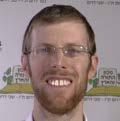
The Torah designates shemitah produce for eating: “And the [produce] of the Sabbatical year is for you to eat” (Vayikra 25:6). Chazal derive from here that shemitah produce may not be used to pay debts or fulfill obligations. Besides paying wages, this includes a pledge to hold a kiddush after shul, for instance, or even bringing obligatory sacrifices. Some posekim learn from here that it is forbidden to use shemitah produce to perform mitzvot since it is tantamount to paying our debt to G-d.

Under what circumstances may shemitah wine be included in mishloach manot?

Halachah mandates giving mishloach manot to one person only. It follows that the prohibition to perform this mitzvah with shemitah produce applies only to the first mishloach manot given on Purim. Afterwards, though, it would be permissible to give additional mishlochei manot
incorporating shemitah produce.
When one receives mishloach manot from a friend, it is the accepted practice to reciprocate with mishloach manot. Many posekim relate to this situation as repaying a (social) debt. For this reason, it would be forbidden for the recipient to reciprocate with mishloach manot including shemitah produce.
According to Rabbi Elyashiv (and others), however, this is not considered an actual debt since one cannot sue his friend in a rabbinical court for failing to reciprocate with mishloach manot. Nevertheless, most posekim maintain that this should be avoided.
Shemitah wine at the Purim seudah
Without getting into the particulars of the obligation to get drunk on Purim, wine is often spilled by drunkards, who overturn cups or bottles, and even worse, vomited. Is it permissible to use shemitah wine for the Purim meal? Or is this considered hefsed, causing shemitah produce to be spoiled?
It is forbidden to place a cup of shemitah wine at the edge of the table (makom toref) since it is a place that will almost certainly cause the holy wine to spill and be wasted (or, as mothers would say, “a disaster just waiting to happen”). At the Purim meal, however, any given bottle or cup will not necessarily be overturned. So too, the wine will not definitely be vomited (unless someone is already on the verge/midst of doing so). Because waste is not a certain outcome, it is not considered directly spoiling shemitah produce.
It is permissible to use shemitah wine (or produce) in mishloach manot lechatchilah only after giving the first mishloach manot and not as reciprocation.



Shemitah wine may be used in the Purim

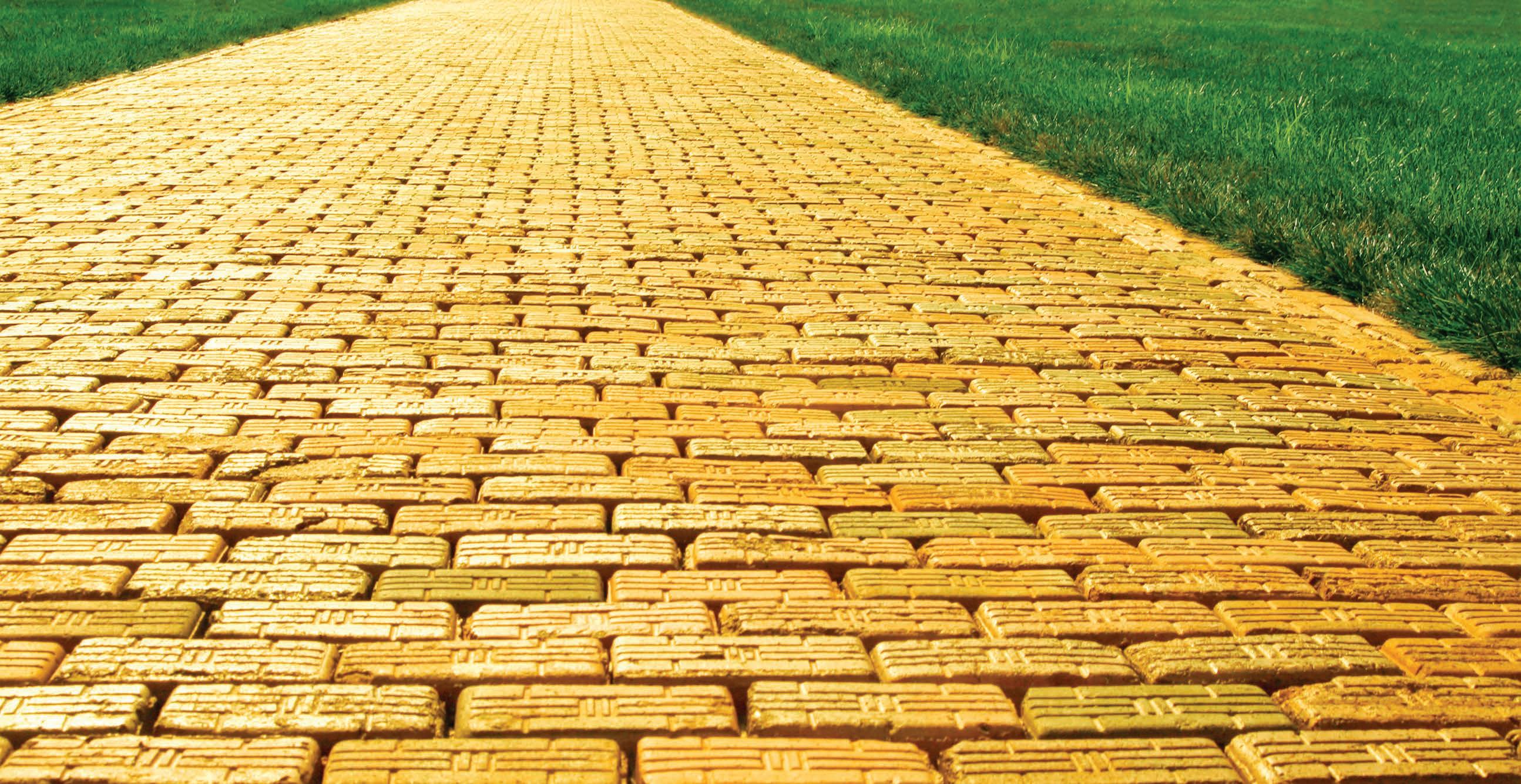
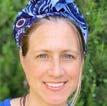
My 13 year old son says that there are boys who are bad influences in his class but the teacher keeps trying to make the class more cohesive and my son feels stressed out. He doesn’t want to feel pressured to be friends with boys who are doing “bad things”( vandalize, smoke, bully others). Should I speak to the teacher? What should I do? H.M.
Dear H.M.
It sounds like your son is having a hard time navigating this complex social situation. He is caught between respecting his own values, pleasing his teacher and possible peer pressure. This is an age when he is forging his own identity and it’s an opportunity to support him and encourage him to trust himself. It’s great that your son is sharing his concerns with you so that you can guide him through this.
The goal here is for your son to learn how to be part of a group without losing his own identity. Throughout his life he will be grouped together with all types of people. There may be certain people he won’t like and the challenge is to learn how to maintain a basic relationship- whether it’s with a classmate, colleague or family member

while maintaining his self-respect. He may be able to connect to a classmate on a basic level by focusing on commonalities such as age, hobbies, shared past experiences. He may even have a good influence on a boy who he thought he would never be friends with! Try to give him personal examples from your life when you’ve had to manage social situations which are not ideal. Sharing suggestions that helped you navigate similar situations especially as a teenager can be very helpful.
Pressure from the teacher adds another dimension. It is not easy to stand up to authority, and this is a skill that comes with practice. You can help your son rehearse how he would express himself in a respectful manner without tattle tailing on the other classmates. Intervening on his behalf right away would deprive him of this learning opportunity. However, if he still feels overwhelmed and unheard, you should reach out to the teacher. Even kids at that age sometimes need parents to advocate on their behalf. There may be things going on in a class under the surface that the teacher is unaware of and it should be addressed.
Most important is to show your child you trust him to know who he wants to be around as they will be influential in his life. Together with that, focus on helping him develop skills to tolerate people who are different. These techniques take time to develop and it’s good he’s learning them now. Be’hatzlacha



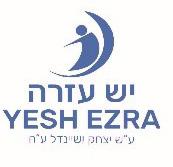
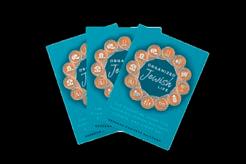
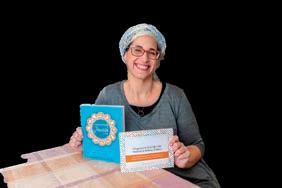





















May 1999 was the first time I landed in the Ukraine as a shaliach of the OU.

Ukraine was the birthplace of a remarkably powerful movement that influenced the Jewish world - the Hasidic movement with great leaders in Breslav, Oman, Berdichevwhich added immense light and joy to the world.
In Kharkov, Ukraine, I was exposed to the vital work of the OU. There was a Jewish school with almost 300 students. Tens of thousands of Jews who lived in the area but did not know about Jewish life received a breath of ‘Jewish oxygen’ from the OU activities in Kharkov.
A year ago, in February 2022, Putin invaded Ukraine and began to systematically and mercilessly destroy it. In one day, they were left destitute, homeless, jobless and without family (men aged 18-60 cannot leave the country
and must help the war effort). The people ran away from their homes with small bags of documents and that was it.
The people of the community in Kharkov in particular, and throughout Ukraine in general, cried out for help. Initially the requests were for food and medicine and then they asked for help to escape and reach the Land of Israel.
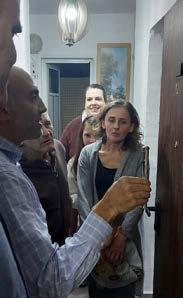
Delegations from the OU went to the borders, took in the refugees, embraced them, distributed hot soup and clothes, helped find them places to stay, and provided direction for their most pressing question - what next?
After helping them reach Israel, we did not let up in our support. We were privileged at the OU to open a department that currently works with hundreds of Ukrainian immigrants throughout the country, helping families with klita in the country, finding a job, a social group, and a community.
We provide the families with spiritual reinforcement, we celebrate the holidays together, on Chanukah we lit candles in dozens of homes, set up mezuzahs, distributed Torah books in Russian and above all else, we are there for them, building
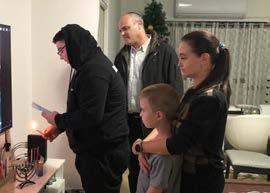
communities together.
The refugees and immigrants in Israel are safe, but their challenges are not over. Now it takes a different form, as they are struggling to rebuild their lives. We must continue to do everything in our power to ensure their physical and spiritual success in Israel.
We are here for them!
You are invited to join the efforts.
Join us on Sundays 12:45-1:30pm at the OU Israel Center Sura Faecher 0504153239



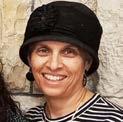
Two weeks ago, Parshat Yitro, we read that Yitro heard “ Vyishma Yitro” and then he came to join Israel in the desert. What did he hear to make him want to come? Rashi says that he heard about the splitting of the Reed Sea and the war with Amalek. We can understand that the supernatural event of the sea splitting would have an effect on Yitro. But lots of nations fight with each other. What was so special about the war with Amalek.?
At the very end of the morning prayer service after Aleinu there are a number of additional readings in the siddur. One of these additions is “The Six Remembrances”. The Torah commands us to remember six unique events from our history. Some authorities maintain that the verses containing these commandments should be recited daily – therefore they appear in the siddur. These six include such major events as the Exodus, receiving the Torah on Mount Sinai and the Sabbath. The list includes remembering how Amalek attacked us on our way from Egypt. Again we see that this event is very important for us to learn from.
And this Shabbat the Rabbis have instituted that the verses commanding us to remember Amalek be read aloud in shul. Since Haman comes from Agag, a
descendent of Amalek, it seems appropriate to remember what Amalek did close to Purim when we celebrate how Haman was destroyed. But what is so bad about what Amalek did?
We are instructed to remember what Amalek did because they are the epitome of true evil. They lived in a distant land and had nothing to gain by attacking the Jewish nation (they weren’t under attack, and they weren’t trying to conquer territory). Other nations were awed by the miracles that God had performed in Egypt and at the sea, and Yitro even decided to come to join the Jewish nation, after hearing about those miracles. Yet Amalek’s belief was that these events were mere coincidence. They did not believe in God’s involvement in the world. They believed that there is no providence, rather everything is mere chance, as the verse says “ Asher Karcha baderech –they happened upon you” (Devarim 25:18). If everything is haphazard then there are no set rules, no absolute standard of morality. This belief led them to act cruelly to the Jewish nation, attacking the stragglers in the rear who were weak after years of slavery and tired from the Exodus and crossing the sea. They acted cruelly for no reason.
We are instructed to remember what Amalek did. They tried to eradicate us physically (in battle) and spiritually by planting doubt about God’s presence in the world. As the verse says in Shmot ( 17:16)
the throne of God is not complete as long as Amalek and his ideas are around so the battle with Amalek is for all generations.
May our remembering Amalek and our celebration of Purim strengthen us in this constant battle against the heresy and cruelty of Amalek and people following the path of Amalek through the centuries.
The verse says that Amalek “Karcha baderech” they encountered you on the way. The word “Karcha “ means cold. So this sushi recipe includes cold cuts. And Sushi reminds us of Shushan where Haman, a descendant of Amalek was defeated.
1 cup sushi (short-grain) rice
2-1/2 tablespoons rice vinegar
1 tablespoon sugar
1 package of your favorite cold cuts
Thin strips fresh or leftover cooked vegetables (carrots, red pepper, zucchini, green beans, avocado, green onions)
Rinse rice in cold running water. Place in pan with 11/2 cups water. Soak for half an hour. Bring to boil. Reduce heat, cover and simmer on low for about 20 minutes or until all water absorbed. Simmer vinegar and sugar together until sugar dissolves. Pour over rice. Mix and cool. Place a heaping tablespoon of rice on top of two pieces of the cold cuts. Flatten rice down. ( If you wet your hands it’s easier to work with it). Arrange strips of the vegetables on one end of the cold cut slices. Roll up tightly. Slice. Place on serving dish with seam side down. Repeat with remaining ingredients.
All Shiurim on Sunday, February 26th were sponsored by Harriet Nussbaum in memory of HaChaver Shmuel ben HaChaver Meir z”l - Yahrzeit was 5 Adar
Sunday, February 26th - Rabbi Brietowitz’s shiur was sponsored by Gary & Laurel Schiff in honor of Rabbi Kalman & Dina Flax’s new baby boy, Elisha. Wishing them a big Mazel Tov!
Monday, February 27th – Rebbetzin Pearl Borow’s shiur was sponsored by Sarah & Hanan Lemann in memory of our beloved Son-in-Law on his First Yahrzeit - 6 Adar
Monday, February 27th - Rabbi Taub’s shiur is sponsored by Leslie Portnoy in memory of Yisroel ben Yaacov HaKohen z”L - yahrzeit is 6 Adar
Tuesday, February 28th - Rebbetzin Shira Smiles shiur is sponsored by Renee Becker in memory her mother
Tuesday, February 28th - Rebbetzin Smiles shiur is sponsored by Tzippy & Kenneth Block in memory of Tzippy’s mother - Miriam Press a”h whose yahrzeit was 30 Sh’vat
Tuesday, February 28th - Rabbi Goldin’s Shiur is sponsored by Iris Rothman in loving memory of her father
whose 30th yahrzeit is 14 Adar
Sunday, March 5th - Rabbi Breitowitz’s shiur is sponsored by Dr. Michoel & Elaine Reiman in memory of their parents: Ida & Charles Schwartz a”l and Anne & Maurice Reiman z”l
Rabbi Goldscheider’s shiur has been sponsored for the 2023 Academic Year
ל’’ז המלש ןב בוט םשו ה’’ע םהרבא תב םירמ תמשנ וליעל
Rebbetzin Shira Smiles shiur is sponsored for the 2023 academic year by Dr. & Mrs. Menachem Marcus in memory of their parents, Rose & Dr. Emanuel Marcus z”l -
ל”ז סוקרמ השמ ןב יכדרמו ריאמ ףסוי תב לזייר
Rosi and Ernest Strauss z”l -
ל”ז סוארטש דוד ןב לאינדו םהרבא תב דומיל
Rabbi Breitowitz’s Tuesday Shiur - Minchat Chinuch is sponsored for the academic year 2023 by Rabbi Refoel & Sharon Auman in memory of their parents Edith & Reiner Auman z”l
ד”יה לאפר תב ה”ע רתסאו ל”ז קודצ ןב הנוי and their son Rabbi Shmuel Eliyahu Auman z”l
י”נ לאפר ברה ןב ל”ז והילא לאומש ברה
Rabbi Goldin’s shiur is sponsored for the 2023 academic year by Dr. & Mrs. Menachem Marcus in memory of beloved aunts
Irma Haas a”h and Hilde Myer a”h
Rabbi Manning’s shiur
has been sponsored for the 2023 academic year
ל’’ז ןמלק ןב גילזו ה’’ע תידנרב תב הנרב תמשנ יוליעל
Rabbi Taub’s weekly Thursday Parshat HaShavua Shiur is sponsored by The Jewish Legacy Foundation
is the same day whether you celebrate Purim on the 14th or the 15th of Adar.
Taanit Esther is Monday, March 6th. The fast begins in Jerusalem at 4:49am and concludes at 6:07pm.
can be given at Mincha of Taanit Esther or before Megillah reading. Common amount is 3 half-shekel coins. Some give the value of the original silver half shekel, which at today’s price of silver and the current exchange rate is around 20NIS. Remember - we don’t give Machatzit HaShekel without a Beit HaMikdash, we give ZEICHER - commemorative of it.
AL HANISIM said in the Amida in the B’RACHA of MODIM and in Birkat HaMazon in the B’RACHA of NODEH L’CHA. If you forget AL HANISIM in the Amida, do NOT repeat it. If you catch your omission before HaShem’s name in HATOV SHIMCHA... go back and say it. If you already said HaShem’s name, finish the Amida and before you say YIHYU L’RATZON... and take your steps back, say Al HaNisim with a modified opening sentence:
השע רשאכ תואלפנו םיסינ ונל השעי אוה ןמחרה רתסאו יכדרמ ימיב .הזה ןמזב םהה םימיב וניתובאל
Similar for Birkat HaMazon. Before HaShem’s name in AL HAARETZ V’AL HAMAZON, go back and say it. After HaShem’s name, continue until right before HARACHAMAN HU Y’ZAKEINU and say it with the modified opener, as above.
Jerusalemites who go outside for 14 Adar and outsiders who come to Jerusalem for Purim should ask a Rav what is and is not required of you on the other day.
Is taken from the end of B’shalach - VAYAVO AMALEK... If you missed ZACHOR, you should ask the Baal Korei to have the Mitzvah of ZACHOR in mind, and you should have KAVANA likewise.
Required TWICE, at night and in the day. KAVANA should include the Mitzvah of Megillah and the publicizing of HaShem’s miracles. The b’racha of SHE HECHEYANU in the morning covers the other mitzvot of the day. (Have them in mind.) MATANOT LA’EVYONIM are gifts to the poor (be generous, more than you spend on Mishlo’ach Manot). Best to give on Purim day. Giving it earlier to someone who will distribute it on Purim day is also acceptable.
are gifts of foods (min. two kinds) to friends (or just other Jews) - who are observing Purim the same day you are. One Mishloach Manot is sufficient, but most people give multiple times.
is a festive meal in the afternoon of your Purim day
The proper custom on Purim is to drink more wine than you usually do. A bit more is sufficient. In most cases, excessive drinking turns out not to be in line with SIMCHAT PURIM. Be careful. And watch out for your family members.

Special thanks to Shlomo Gherman for this photo


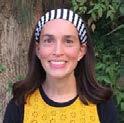
Even though we already concluded our study of Birchat HaMazon in the last article, I recently came across a remarkable story about bentching that I thought would be important to share with you. The story illustrates a beautiful point brought down by the Sefer HaChinuch. The Sefer HaChinuch writes –
Anyone who is careful with their Bentching, his livelihood will be provide for him with respect all of his days
We spent a lot of time in our Birchat Hamazon series discussing the meaning and significance of all of the Brachot of the Bentching. But beyond understanding the deeper meanings, we also need to make sure to be ריהז with our bentching, to be careful how we recite the Bentching, the respect we give to it, and the way we concentrate and focus. If we do our bentching right, we are told that Hashem will reward us with a good livelihood.
This story is told by Rabbi Yoel Gold and has a profound message for us in our own bentching.
Two years ago, after the tragedy in Meron, a man named Chaim Ginz decided to try and be menachem avel as many of the victims’ families as possible. The first family he visited was the Zacbach family in Bnei Brak, who were mourning their 24 year old son, Menachem Asher. At the shiva house, the family gave out bentchers with the inscription – “The last will/
request (האווצ) of Menachem Asher is to bentch out of a bentcher”. The family explained that at the age of 16, Menachem Asher had taken on the practice of always bentching from a bentcher and never reciting the bentching by heart. He took this commitment very seriously and would never wash and eat bread unless he was absolutely sure there was a bentcher available in the vicinity. Chaim Ginz heard this and decided to take on this practice as well, l’iluy nishmat this young man.
About a month later, Chaim was feeling pretty stuck. He was having trouble making a living. He was a Sofer and he had just completed a project and was unable to find any more work. Day after day, he would show prospective clients samples of his work but they just kept turning him away. He was feeling very rejected and depressed. One day, he was in a special apartment in Bnei Brak which sofrim use as a place to do their work. He had something to eat and was ready to bentch. He didn’t have a bentcher on him so he was about to bentch by heart. But he remembered his commitment and began to search the apartment from top to bottom. Finally, after many minutes, he located a bentcher hidden under a stack of papers on the top of a bookshelf. He noticed that the bentcher was written in תירושא בתכ, the font used by sofrim. He admired the beauty of the writing and after bentching, he decided to use the bentcher to help him with his own writing. For three hours, he
copied the details of every single letter of the bentching, until it came out perfectly.

Less than five minutes after he finished, there was a knock on the door. A soferfriend of Chaim walked in and asked him if he’d be interested in writing a Sefer Torah. A family had offered him the job and he didn’t have enough time. Chaim couldn’t believe it – a project like this would give him parnassa for months! The friend asked Chaim for a sample to show the family. Chaim ran and got him the Birchat Hamazon piece he had spent the last three hours working on. The friend brought the sample to the family and they were so impressed that they hired him on the spot!
Chaim asked his friend who this family was. Chaim’s friend explained that the Friedman family from Boro Park really wanted to help out the families of the victims of the
Meron tragedy. They decided to do so by donating a Sefer Torah to each of the families in memory of their loved ones. Chaim asked him which family he would be writing the Sefer Torah for. His friend answered that he would be writing it for…. the Zacbach family in memory of Menachem Asher Zacbach!
This story is one of amazing Hashgacha, in which Chaim is rewarded for his bentching efforts with a knock five minutes later offering him Parnassa. He learned from Menachem Asher how to bentch properly and through that, ended up writing a Sefer Torah in Menachem Asher memory. This remarkable story reminds us how important it is to really focus on our bentching, put aside all distractions, and concentrate on what we are saying. May we all merit good Parnassa in the merit of our attempts to improve our bentching.

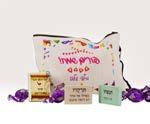
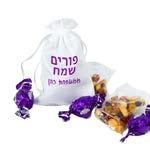




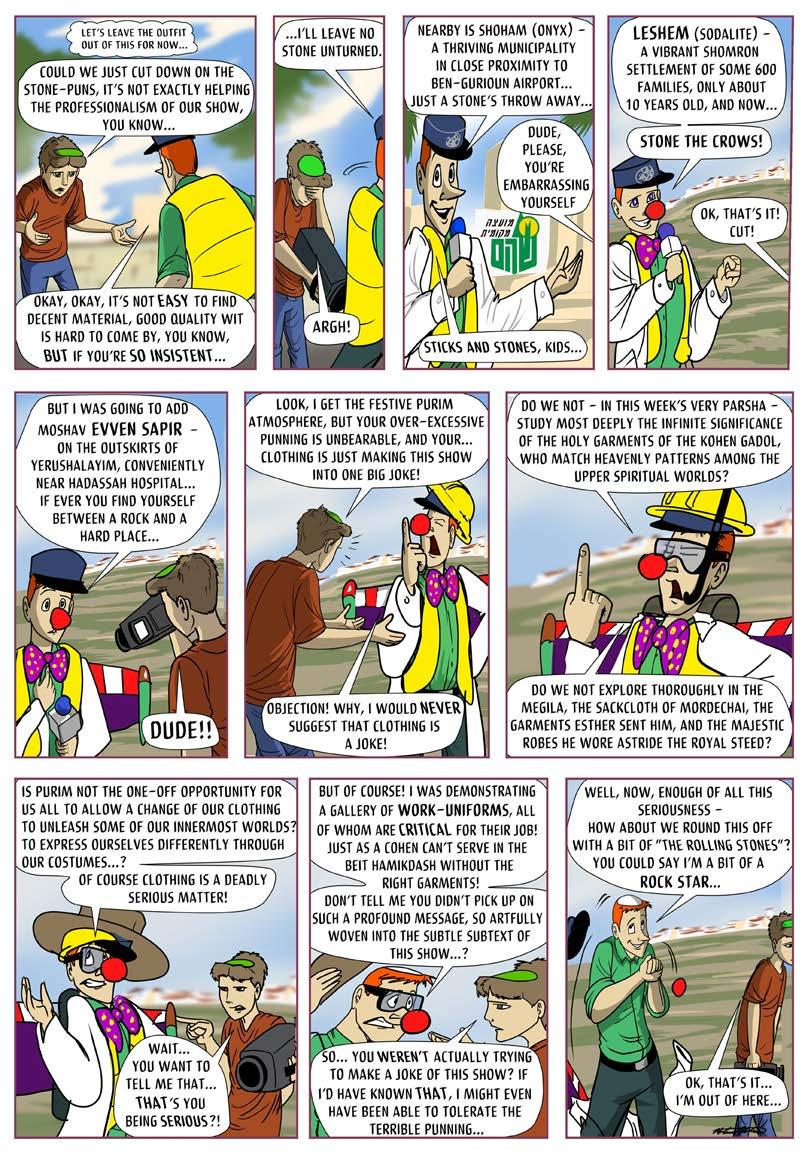
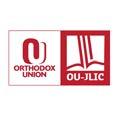
When talking about the characteristics of love, Rabbi Abraham Isaac Kook writes something quite challenging - the highest form of love, he suggests, includes, in some way, a love for Amalek.
He writes as follows: “The characteristic of love that is entrenched in the soul of the righteous, includes all of creation, and does not exclude anyone, no people or language, even Amalek is only obliterated underneath the heavens…but above the heavens (Amalek) is included in the highest form of love” (Midat Haraayah, Ahava, 6)
Rav Kook interprets the words תחתמ םימשה, written with regards to our obligation to obliterate the memory of Amalek, as a limit; it is limited to underneath the heavens but, regarding the heavenly domain where a world exists beyond human understanding, love knows no boundaries, it can include even Amalek, the quintessential enemy of the Jewish people.
I think this abstract lesson is one to ponder during this week’s parshat Zachor, especially at a time when there seems to be deep tensions in the State of Israel. If true love for Rav Kook means envisioning even a love for an enemy, surely, we must find a

way to demonstrate love for our fellow Jew. With this lofty ideal in mind, it can be said that the M.D Katz OU-JLIC at Tel Aviv University represents a true expression of Rav Kook’s vision for love. It is a place that strives to welcome and embrace the diverse student body of TAU, whilst being a secure and reliable home for those that wish to express their Judaism proudly.
The OU’s Jewish Learning Initiative on Campus (JLIC) is creating and nurturing vibrant religious communities in Israel to support English-speaking college students and young professionals. JLIC Israel’s goals include: building a warm and welcoming Jewish community for students and young professionals; providing engaging and dynamic Jewish education; providing a supportive home environment for Olim; providing resources for personal and religious growth, including personal mentoring, Aliyah support, religious guidance and leadership development. Current JLIC programs in Israel include: Reichman University - Herzliya; Bar Ilan University - Givat Shmuel; Tel Aviv University; Tel Aviv for Young Professionals; and Jerusalem. Contact: Rabbi Jonathan Shulman, Director of OU-JLIC in Israel shulmanj@ou.org
On HaPalmach - great 4 room apartment, 92m plus large garden in use, exclusive. Asking 4.95 million NIS

Palmach - 4 rooms, beautiful, 105m, porch, 2 parking spots, machsan, asking 6.1million NIS
Smadar 050-3114040 // 02-642-4329
smadi_bida@walla.co.il

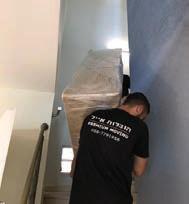











I always seem to find the Parshiyos regarding the Mishkan some of the hardest to connect with. With all of its complexities and tiny details involved, it may often feel tedious and difficult to fully understand. Moreover, this disconnect could also be attributed to it seemingly being solely historical in nature, and not something that is relatable to our times. Nonetheless, these Parshiyos still happen to make up about one fifth of the entire Torah, more than any other topic or Mitzvah. The fact that the Torah has such a focus on this subject, I believe, is of no coincidence. We must therefore search for a deeper understanding of what the Mishkan represents, and how we can genuinely connect to it nowadays.
Already in last week’s Parsha, the

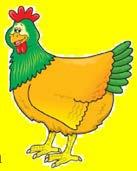

Abarbanel introduces the Mishkan by first dispelling the notion that Hashem needed the Mishkan to be built as a physical place for Him to dwell. Rather, he explains that the Mishkan’s purpose was to in fact be a symbol for Bnei Yisrael in order to remind them that Hashem is indeed always dwelling among the nation; it’s impractical to believe that Hashem who is not physical would need something physical to reside in. This concept is highlighted in many Psukim associated with the Mishkan, including some from our Parsha such as, ‘לארׂשי ינב ךותב יתנכשו’ ‘I shall dwell amongst Bnei Yisrael’ and then ‘םכותב ינכשל’
‘...to dwell amongst them’- reiterating that the principle purpose of Mishkan is to signify the relationship we have with Hashem in that he dwells among us, and not in it.
This being the case, we can now properly understand that the Mishkan is not simply a historical relic, but rather it imparts a fundamental message to all generations. This idea is in fact explained beautifully by the Alshich HaKadosh who says that Hashem’s
dwelling is really amongst each and every Jew, and not limited to the physical building that once was. It is up to each and every one of us to build a Mishkan within our hearts, one that we are constantly working on through Avodas Hashem. Everything that we do should be with a Kodesh mindset, and in doing so strengthen our inner ‘Mishkan’s, and enable our relationship with Hakadosh Baruch Hu to flourish.

Parshat Tetzaveh presents a detailed account of the Bigdei Kehunah and the consecration of Aaron and his sons as the first kohanim of the Jewish people. The Torah describes in great detail the garments that the kohanim were to wear, the materials that they were made from, and the significance of each item.
One example of the attention to detail in this parsha is the Choshen worn by the Kohen Gadol, which contained twelve precious stones, each representing one of the twelve Shvatim of Bnei Yisrael. Rebbi Yochanan Ben Zakai teaches that the Choshen was intended to bring honor to the Kohanim and to distinguish them from the rest of the people, inspiring them to be more beautiful and holy.
Another example is the Mitznefet worn by the Kohen Gadol on his head, which had a golden plate inscribed with the words “Kadosh LaHashem”. This plate was a
symbol of the Kohen Gadol’s dedication to Hashem and his role as a mediator between Hashem and the people. As Rabbi Shimshon Raphael Hirsch explains, the Mitznefet was intended to inspire the Kohen Gadol to maintain a higher level of holiness and purity in his service to Hashem.
These examples remind us of the importance of attention to detail and the significance of even the smallest aspects of our service to Hashem. We should be inspired to put effort and Kavanah to every aspect of our spiritual lives, recognizing that even the smallest details can have profound meaning and significance.
In conclusion, Parshat Tetzaveh should inspire us to recognize the importance of the details and effort that go into every aspect of our service to Hashem. By taking inspiration from the Bigdei Kehunah and their symbolism, we can strive to maintain a higher level of Kedusha and purity in our service to Hashem and to put effort and proper Kavanah into every aspect of our spiritual lives.
A small Sefer Torah with its own Aron Kodesh is available to shiva houses or for any other necessary occasion on a temporary free-loan basis.
If needed call Uri Hirsch 0545513173
for very ill, lonely widow woman with no family. Cancer survivor/ serious heart condition. Desperately needs money for basic needs/ medical expenses/place to live.
joanmarastern@gmail.com Phone 058-778-0691
Endorsed by: Rabbi Zev Leff/Rabbi Yaacov Hillel/ Rabbi Simcha Sheinberg/ Rebbetzin Dena Weinberg/Rabbi Yisrael Gans/Rabbi Dayan Dunner Donations can be sent to:
Rebbetzin Tzipporah Gottlieb-Heller, Neve Yerushalayim Seminary, 1 Beit Yitshak Street, Har Nof, Jerusalem 94130 or to Matat Mordechai Charity, Tax deductible Bank Mizrachi Tefachot. Bank 20. Branch 520, account 128764. Widows account 3649
WE OFFER A MIXED ENVIRONMENT FOR RELIGIOUS AND SECULAR, FOR NEW IMMIGRANTS AND NATIVE ISRAELIS

SOCIAL & CULTURAL ACTIVITIES
Nofei Yerushalayim has a variety of interesting social & cultural activities. Both in English and Hebrew
MEDICAL CARE
Nofei Yerushalayim provides residents with 24 hour medical care and supervision. There is also a nursing wing in the building
ENTRY PROGRAMS:
There are a number of options which are tailored to the needs and financial abilities of each potential resident: Monthly rental, Single Payment Entry Fee or Deposit
Come visit us or call for further information: 02-675-1311

The largest collection of exclusive Jerusalem properties is just one search away www.remaxjerusalem.com

Be'erot St, Giv'at Ze'ev
Huge villa, divided into spacious living level + 5 additional units. 375 sqm. Double parking, garden, balcony, machsan


NIS 6,900,000










Emuna Dadon 054-806-7106
Private House – Moshav Shoeva
184 sqm built on a 740 sqm plot, plus storage and a SWIMMING POOL. Handicap accessible. NIS 6,480,000 Nelly Ephrati Artom 052-476-4356
Emek Refaim St, German Colony
Entire building. Central location. Mixed commercial and residential uses. 720 Sqm. NIS 36,000,000

Ariyel Maresky 072-392-2109
Shabtay HaNegbi St, Gilo
Spacious and bright 4 room apartment. 87 sqm. Large enclosed balcony, air conditioning, parking lot for the building. NIS 2,230,000

Benyamin Zerbib 055-665-4123

German Colony Old Arab style
Renovated, architecturally designed 5 rm, high ceilings, approx. 180 sqm (2 levels) + 15 sqm sukkah balcony private entrance, near Emek and Orient Hotel. NIS 7,900,000 Alyssa Friedland 054-668-411
Hanasi St, Talbieh
New Tama 38 project across President’s house. 80sqm apt will become 110 sqm with, elevator. Large rooms, high ceilings, 2 balconies, one is sukkah. NIS 4,700,000
Orna Even 054-621-6069
Yiftach St, Baka Penthouse


Architecturally designed, beautiful penthouse apt, 5 rooms, 3 bathrooms, Succah, parking, storage. Perfect for a family- ready to move in. NIS 6,400,000
Orna Even 054-621-6069


Horkania Penthouse, Katamon/Rasco

Newly renovated, 4 bedrooms, 3 full baths,150 sqm, large balcony with amazing view, U/F heating, central a/c, elevator, parking. NIS 6,465,000 Ariyel Maresky 072-392-2109
Pierre Koenig St
Beautifully renovated apartment, great location! 4 rooms, 91 sqm, master bedroom with ensuite bathroom, lots of natural light. NIS 3,580,000
Micha Paul 052-511-6340
